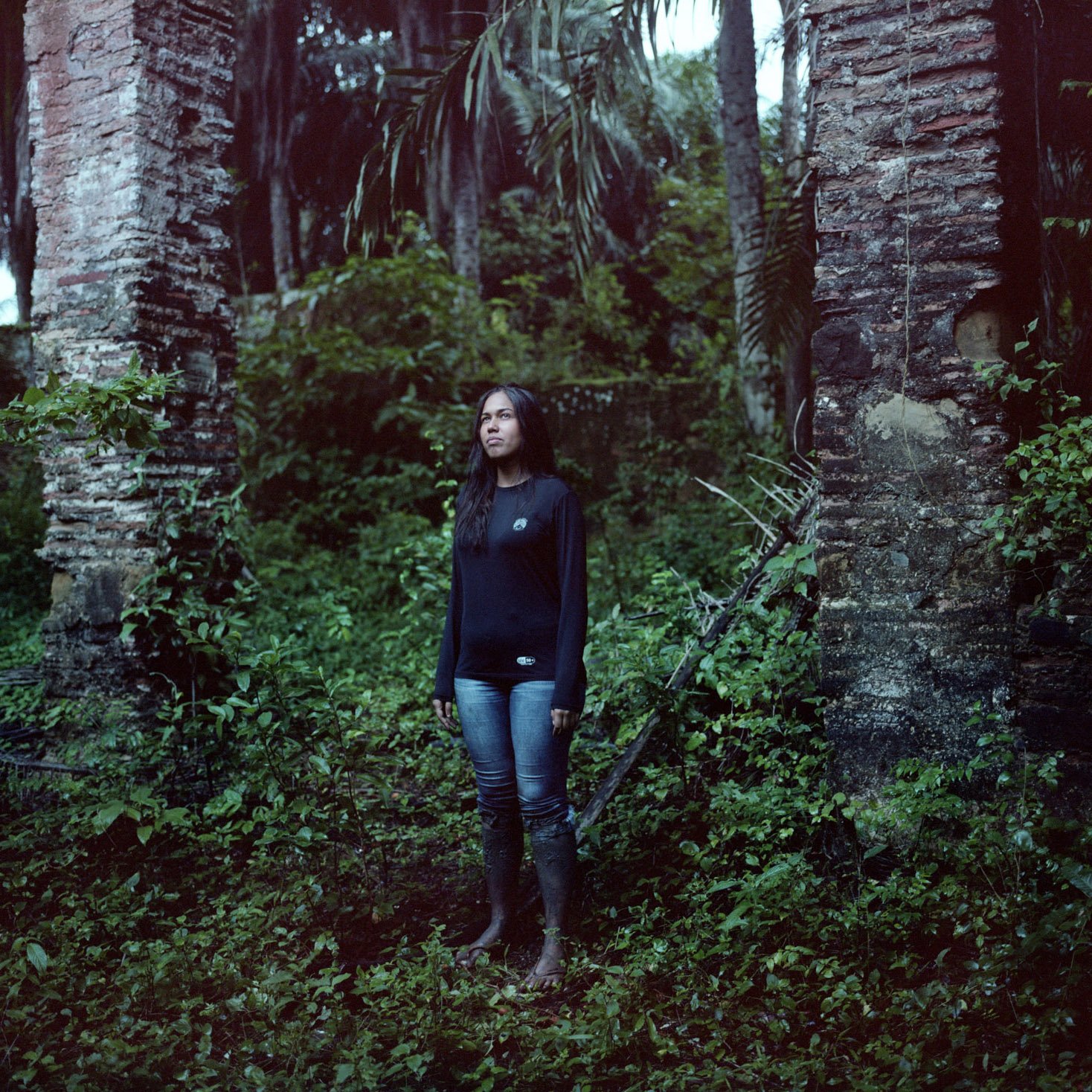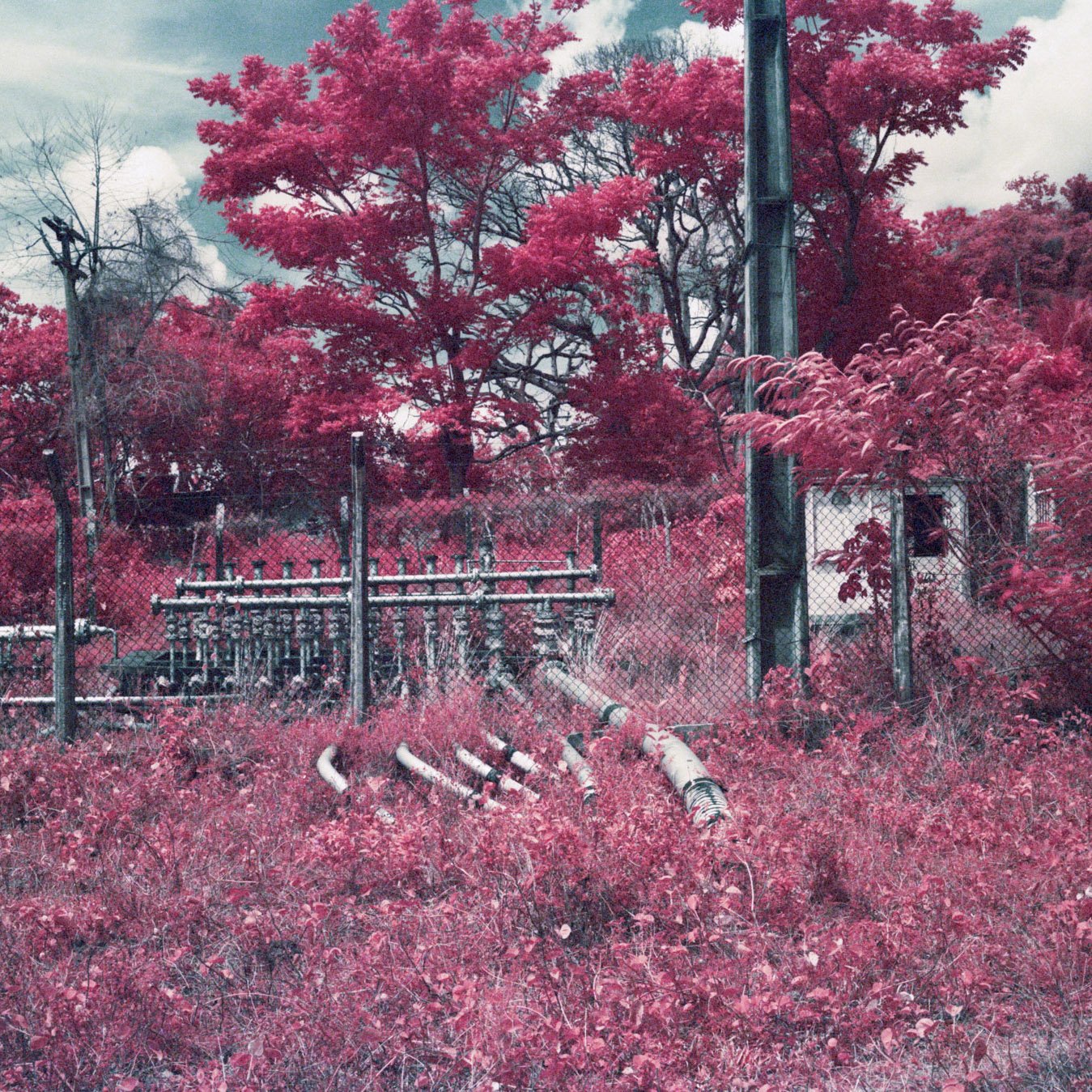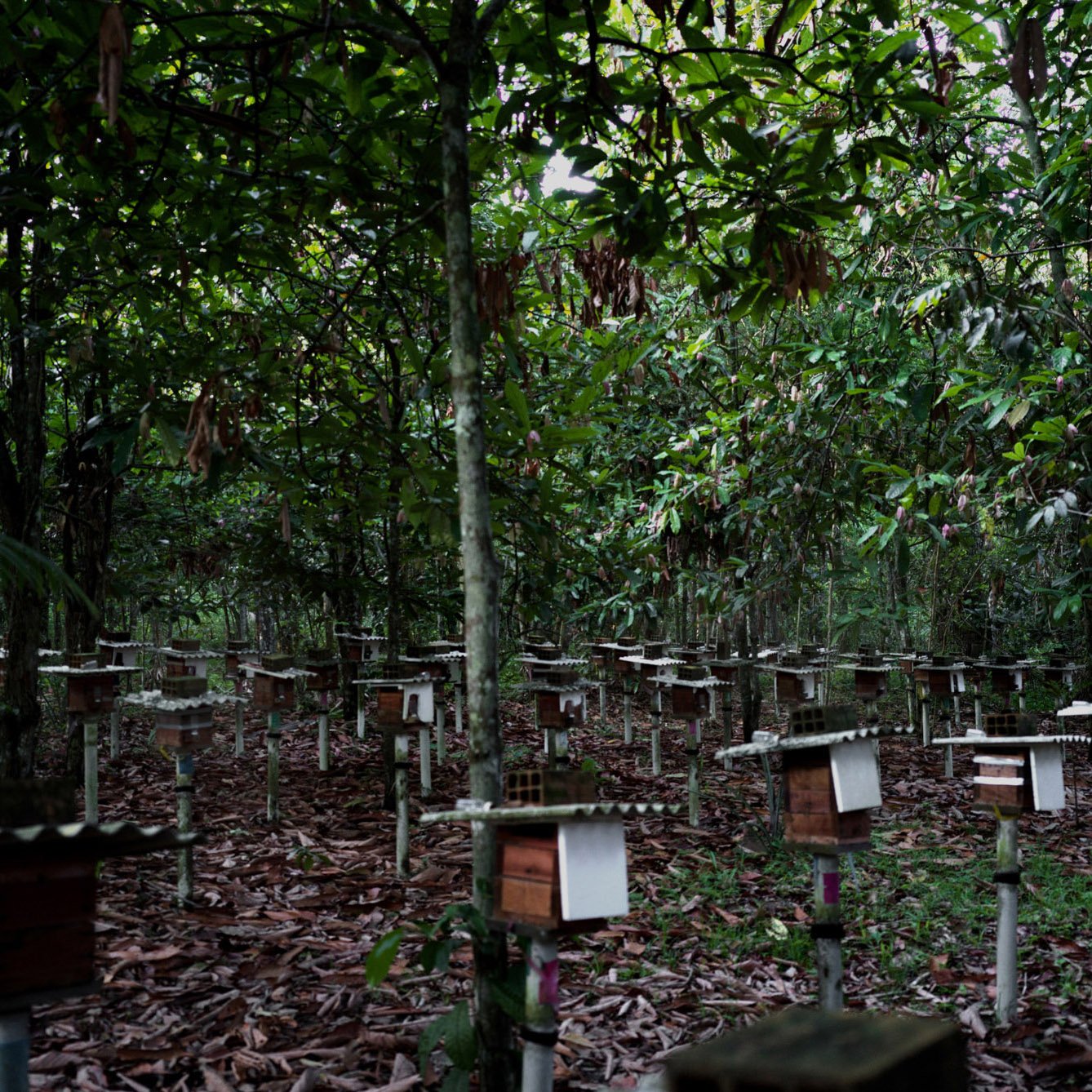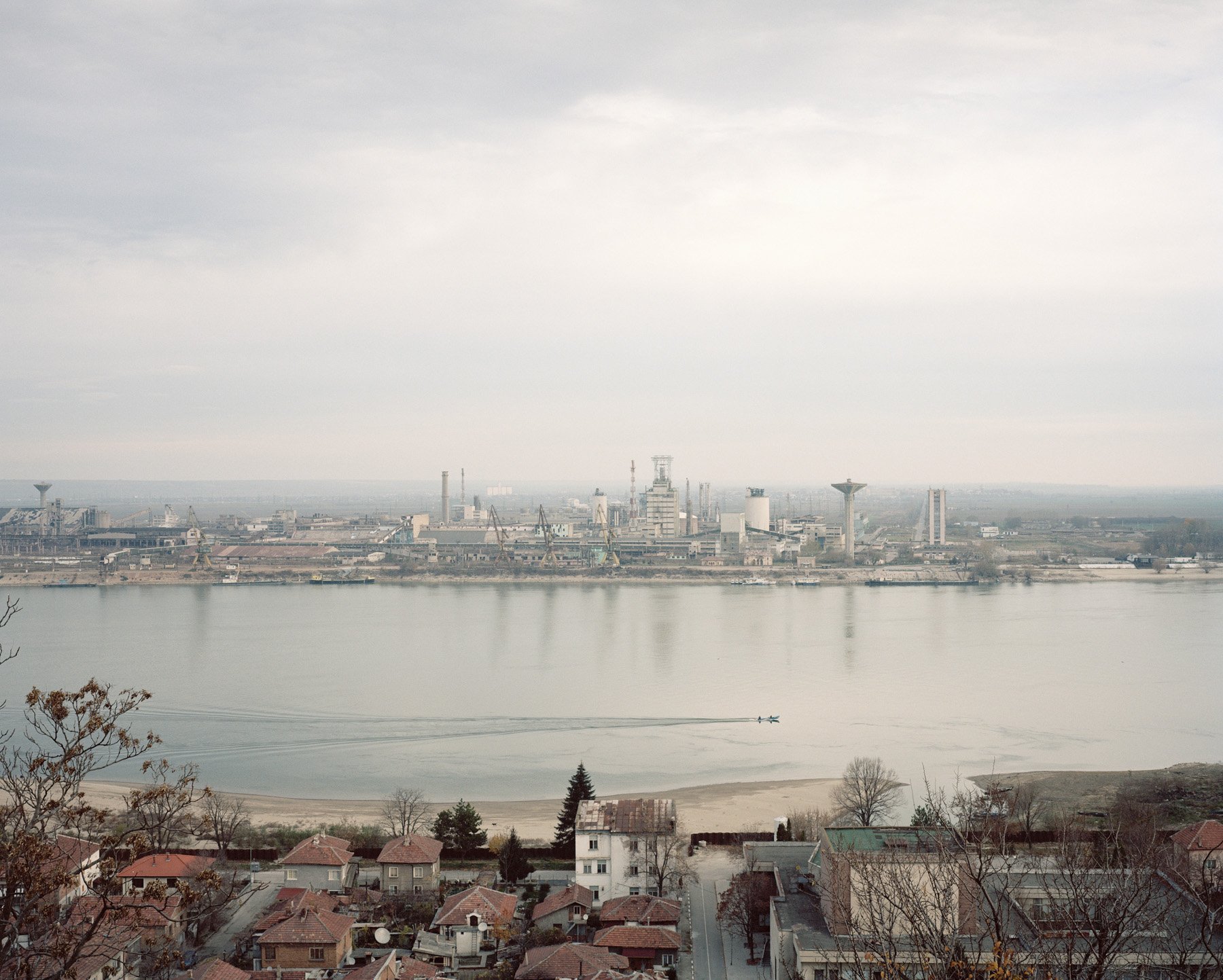
Bulgaria, Nikopol. 2016. A view of Turno Magurele industrial area. Turno Magurele industries caused a massive pollution of the area. At the beginning of the 2000s, many inhabitants of the Bulgarian town Nikopol owned gas masks because the high air pollution caused by the fertiliser factory on the Romanian side of the Danube.
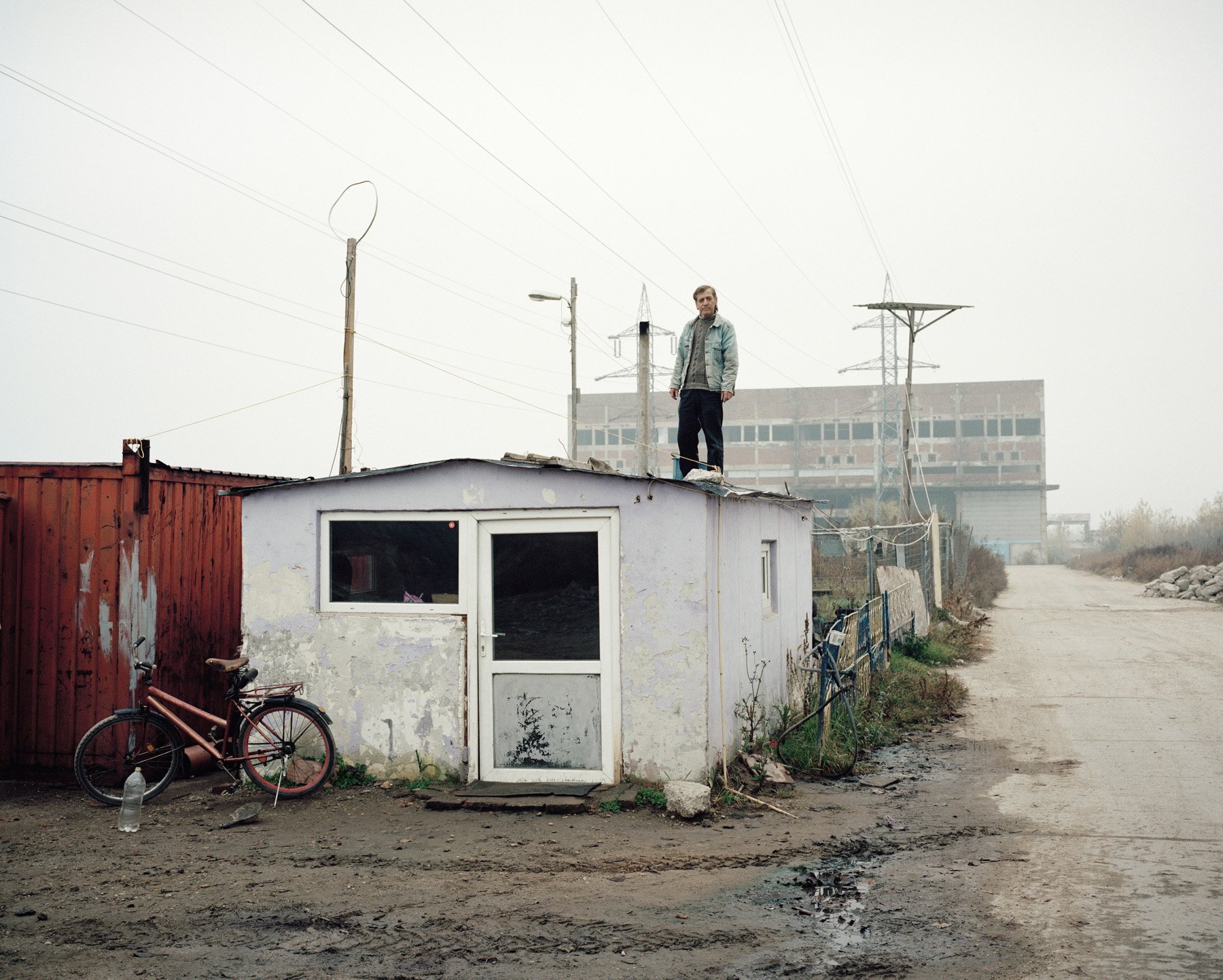
Romania, Giurgiu. 2016. A man working as security guard stand on a barrack in front of an abandoned factory that he watch.
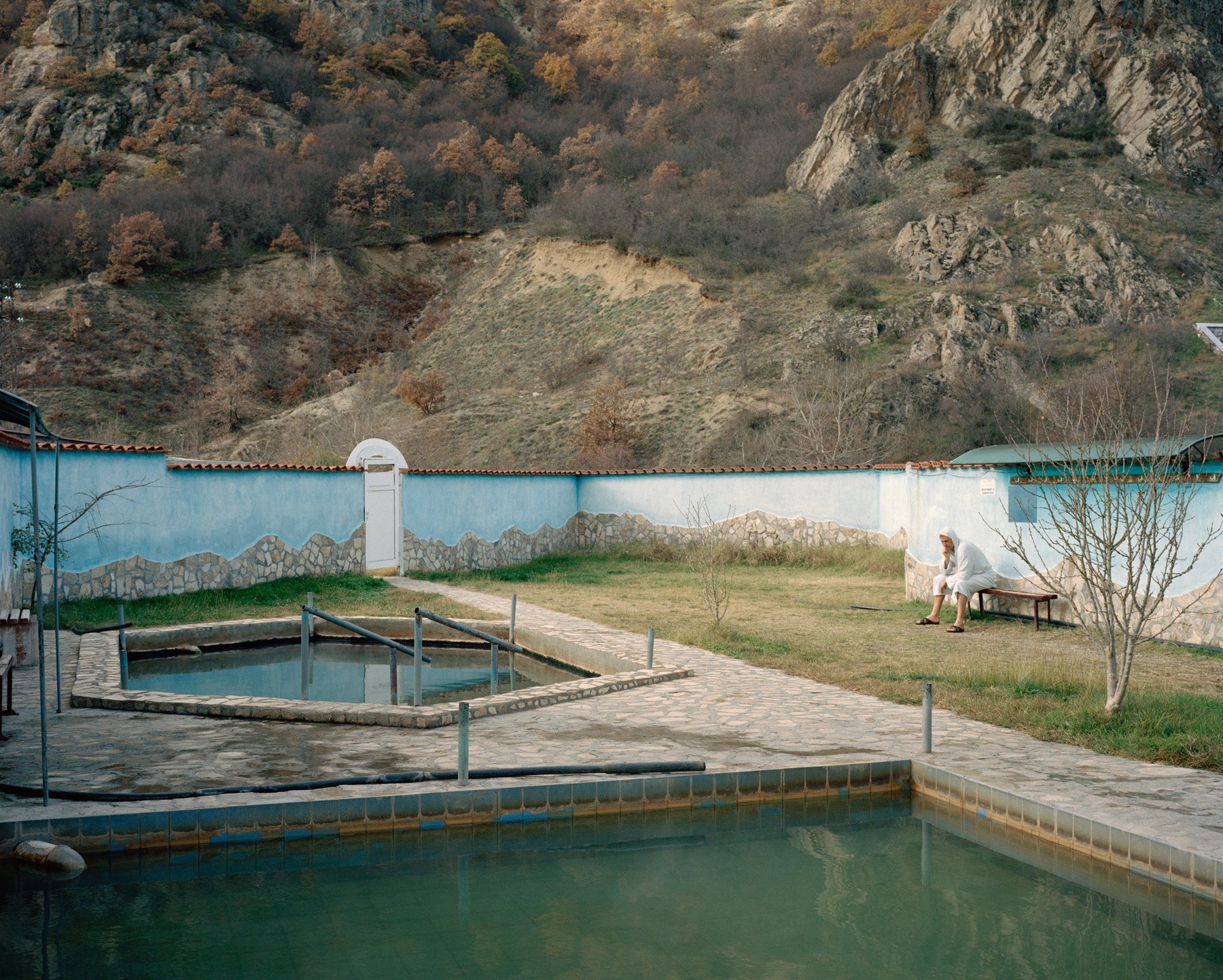
Bulgaria, Rupite. 2016. Thermal bath facilities. Close to the thermal facilities was built the mausoleum to Baba Vanga, laso called the “Nostradamus of the Balkans”, a very famous Bulgarian clairvoyant. Today the place is a renowned tourist attraction.
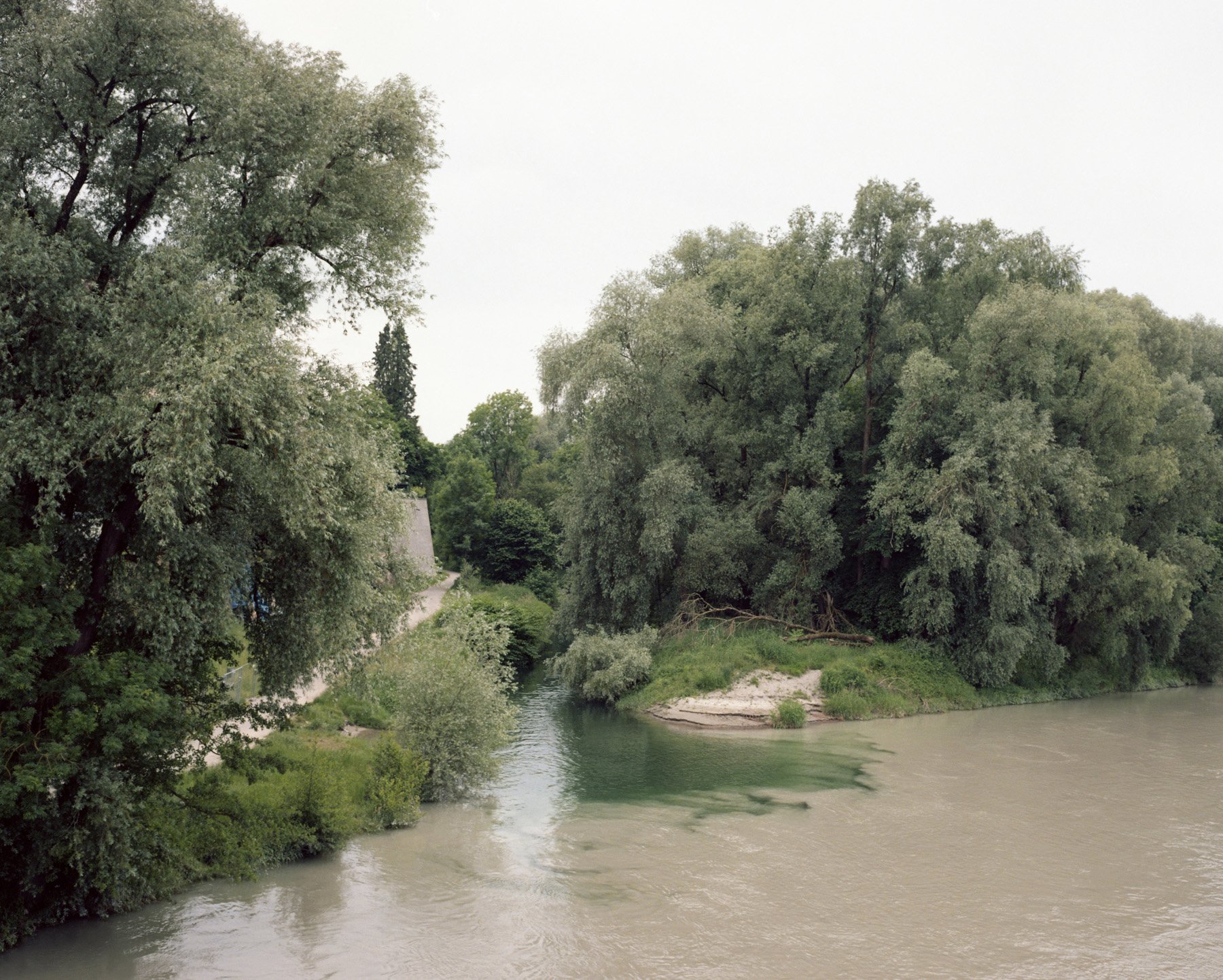
Austria, Braunau am Inn. 2019. The Confluence between the Enknach River and the Inn River in Braunau an Inn. Braunau is an Austrian city that became famous to be Hitler’s birthplace. I recent year Hitler’s birth house became a meeting point for neo-nazi groups, also for this reason the city hall decide to remove the honorary citizenship to Hitler (2011) and to start the procedure to destroy the birth house of the dictator (2016).
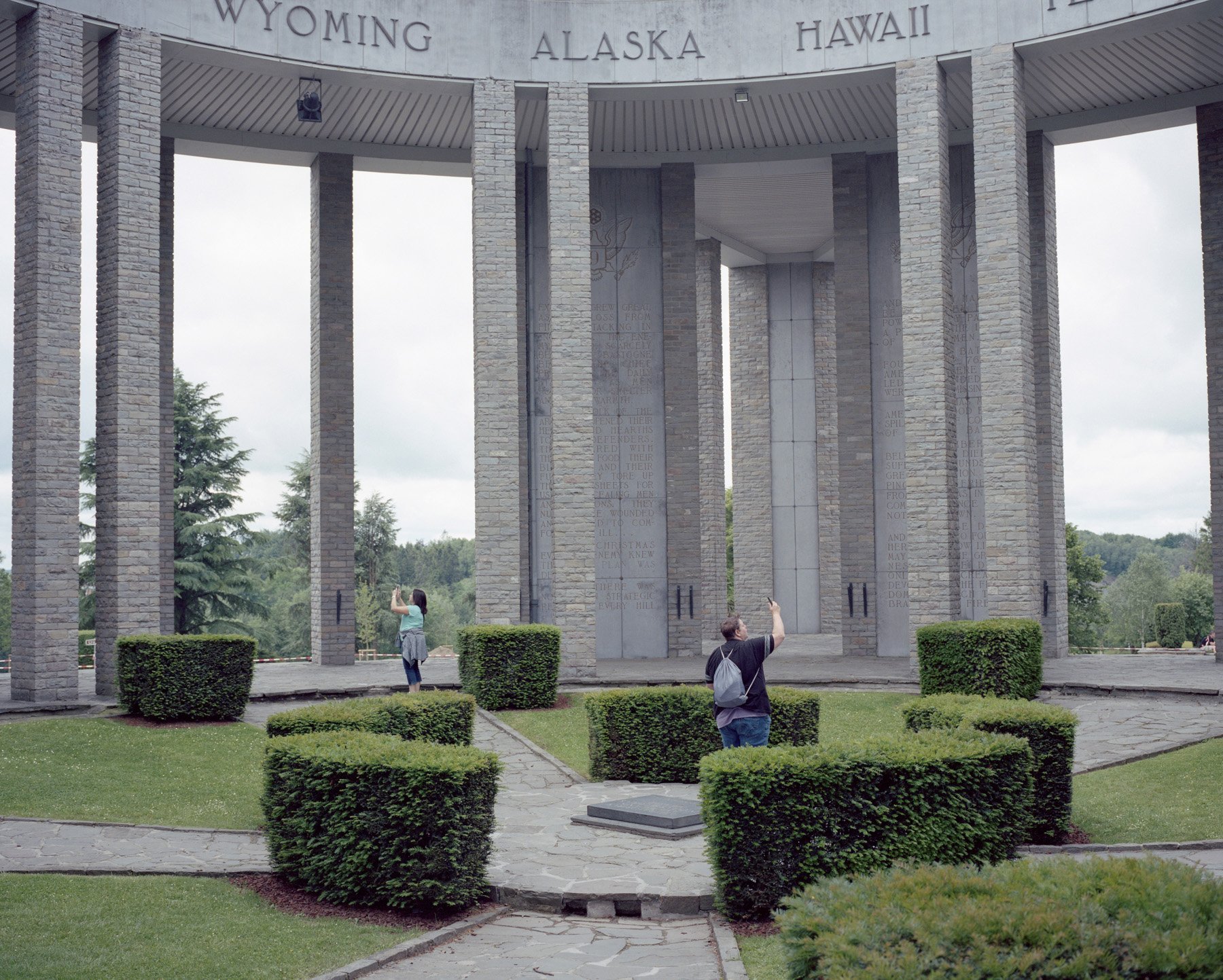
Belgium, Bastogne. 2019. American tourists shoot picture at the Mardasson Memorial that commemorate the Battle of the Bulge happened during the Second World War in which between 63000 and 98000 German soldiers and 89500 American soldiers were killed, wounded, missing or captured.
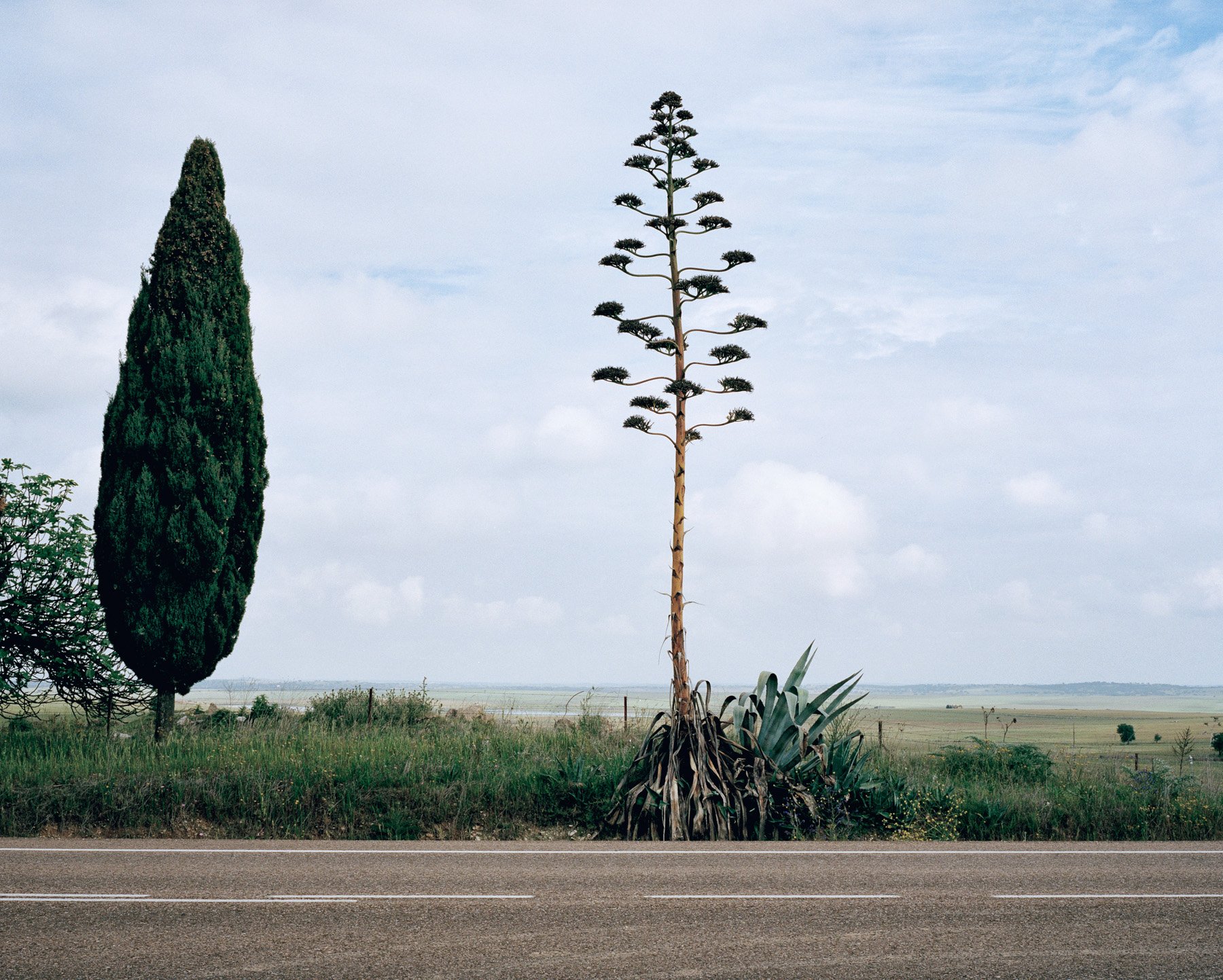
Spain, Villanueva de Fresno. 2015. The road that connect Spain with Portugal. Before the Shengen agreement in this area there wereseveral small informal business, when Portugal and Spain entered in the Shengen Area they disappeared.
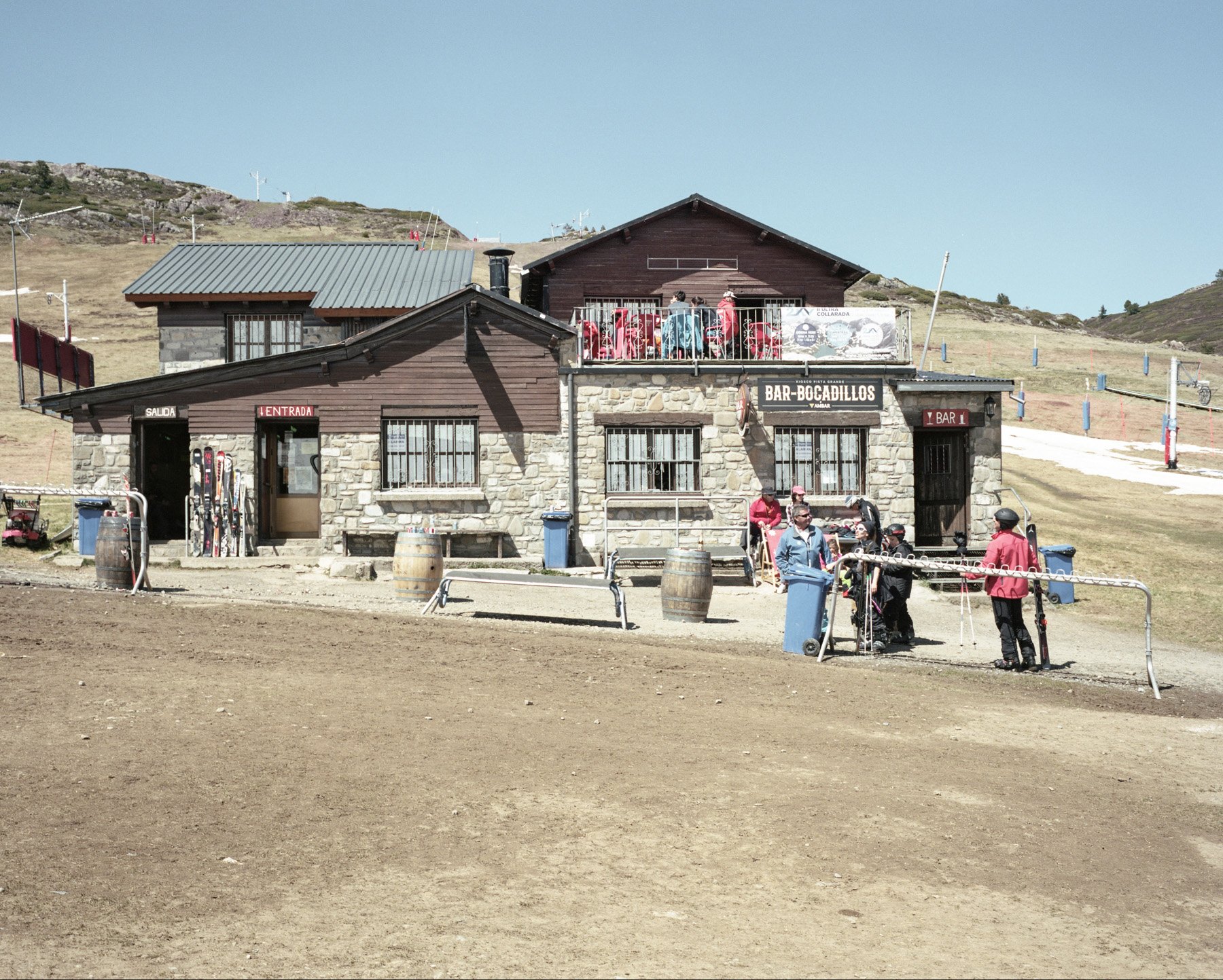
Spain, Candanchu. 2017. A view of a ski resort. According to the European Environment Agency, Europe’s mountain regions may suffer some of the most seve- re impacts of climate change. Increasing temperatures can change snow-cover patterns and lead to water shortages and other problems such as reduced ski tourism.
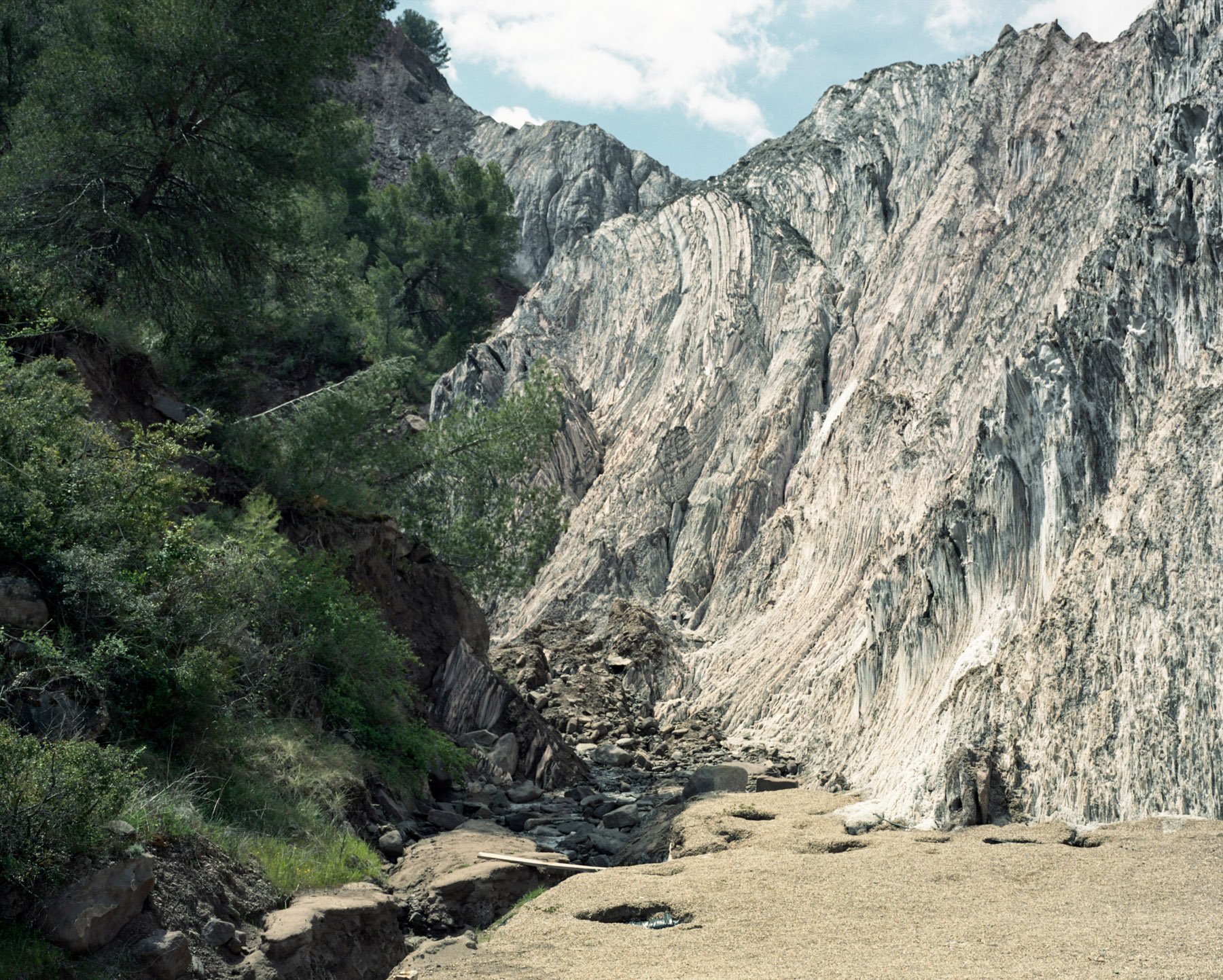
Spain, Cardona. 2017. A view of a mountain of salt, a geological unique of the Pyrenees. In the area the salt mining has been the main activity for decades. The excessive extortion of salt caused the contamination of the aquifer ground.
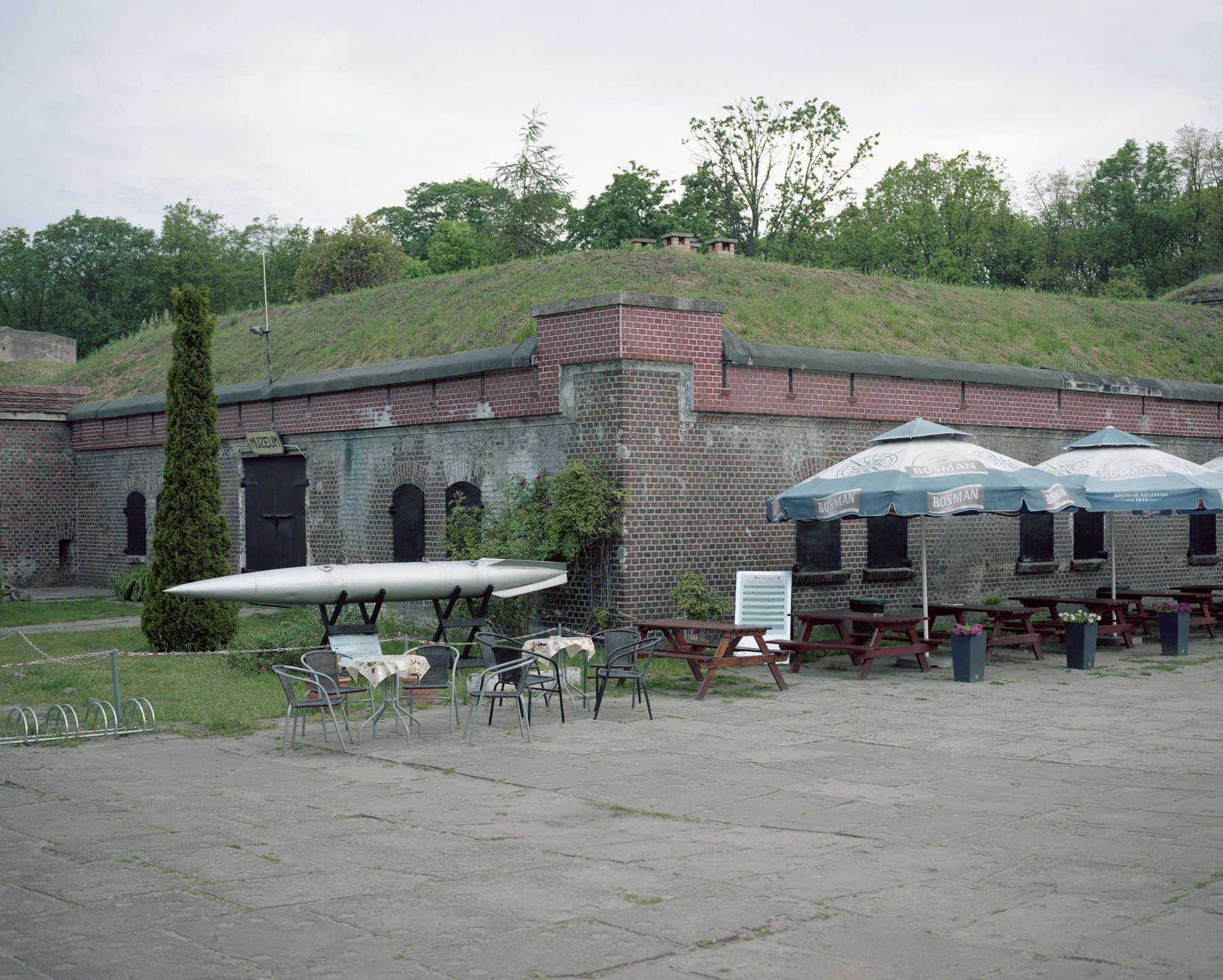
Poland, Swinoujscie. 2019. A view of Fort Zachodni. In the years 1945-1971 the West Fort was occupied by the Soviet Navy. The Russians built three bunkers here with cannon outlets for coastal tower cannons and a steel fire control tower next to the German concrete bunker. Today the fort host several cafes.
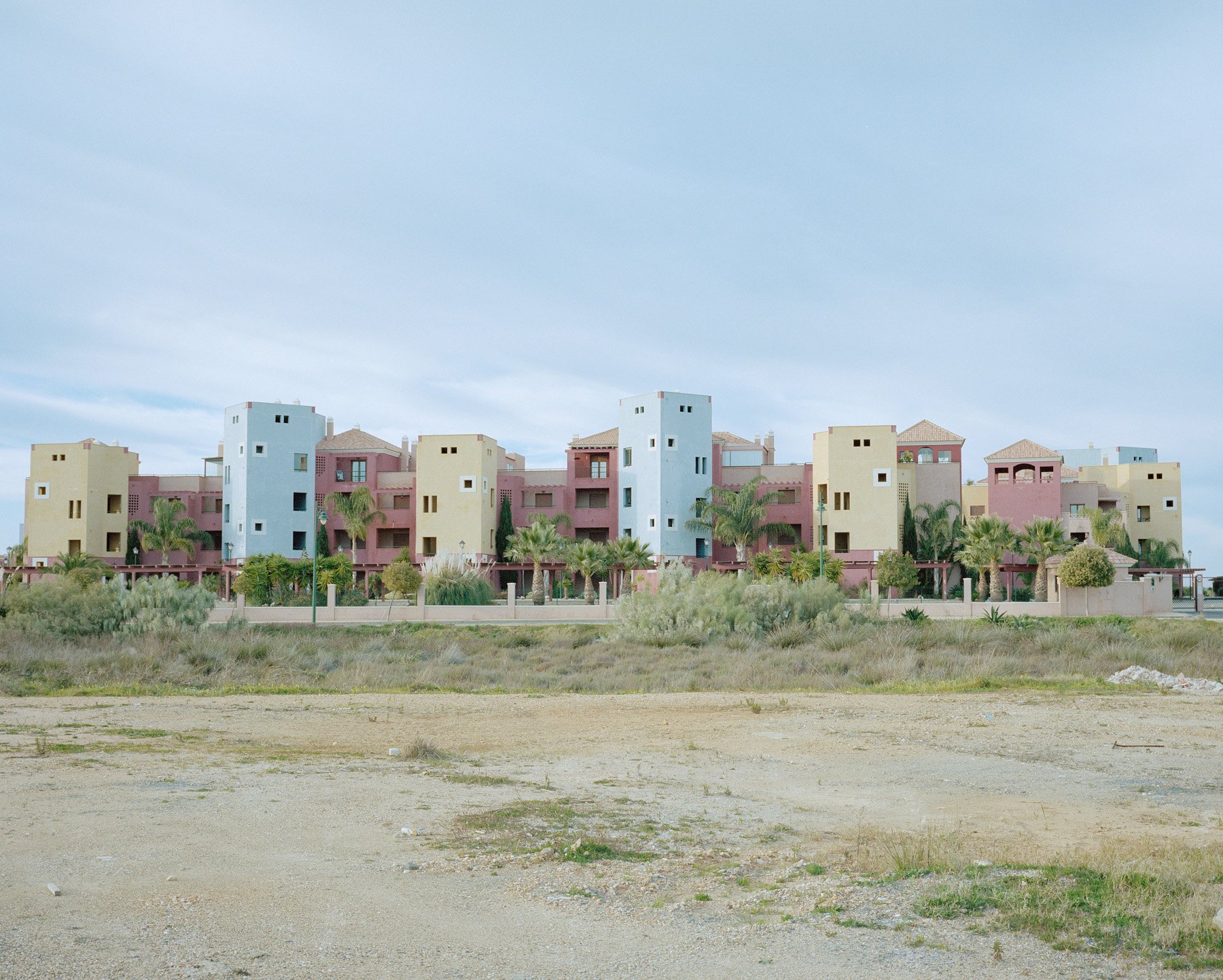
Spain, Ayamonte. 2015. Buildings on a beach of Ayamonte. Before the economical crisis Portugal and Spain strongly invest in civil construction, today several apartments built are empty while several buildings were left incomplete due to the lack of funding.
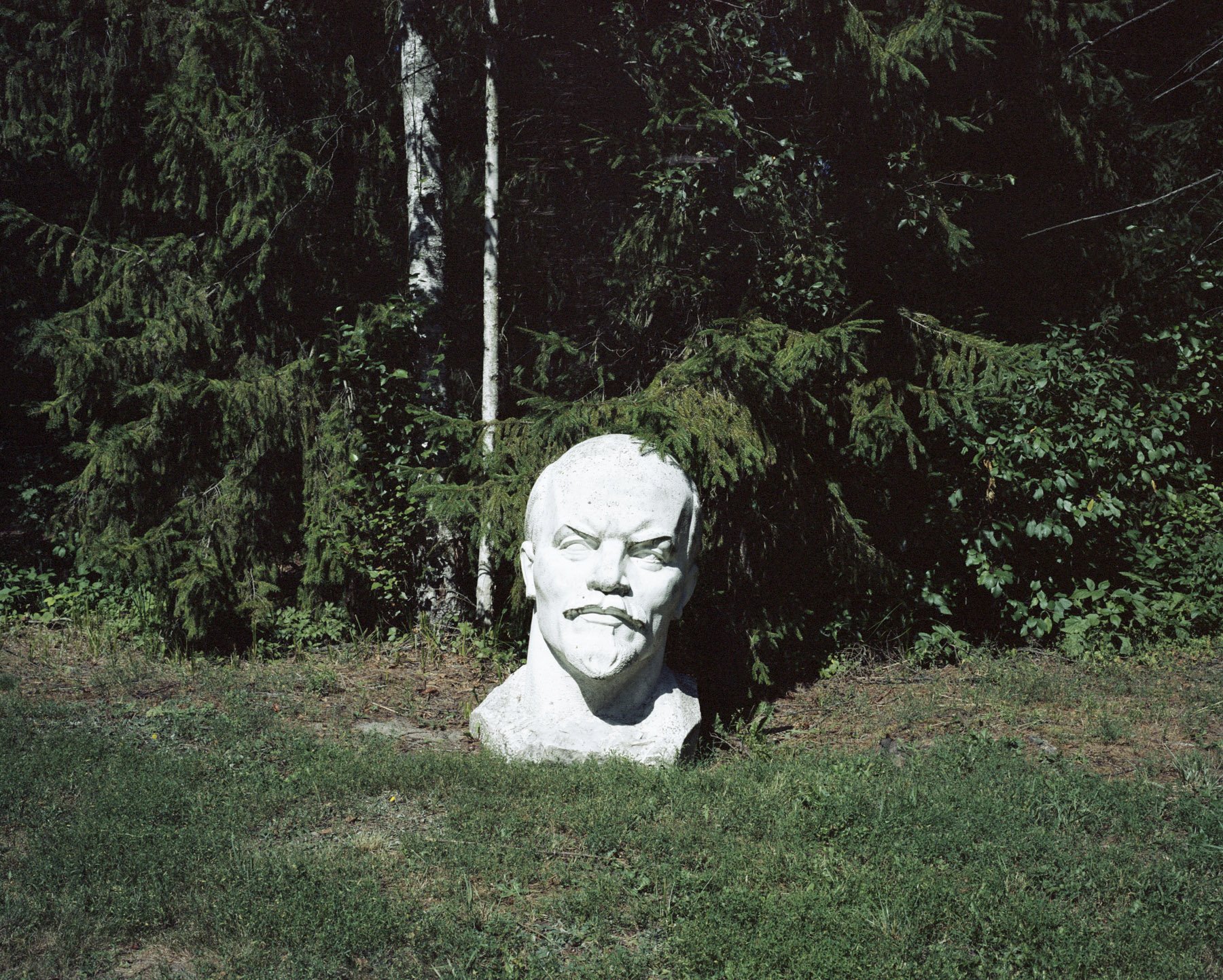
Lithuania, Druskininkai. 2020. A view of a Lenin’s statue head at the Gruto Park, a private park that showcases cultures from the Soviet era.

Spain, Vilanova de la Barca. Vilanova de la Barca were completely distructed during the Spanish Civil War by the Franco’stroops. After Franco rebuilt the city that today is almost uninhabited.
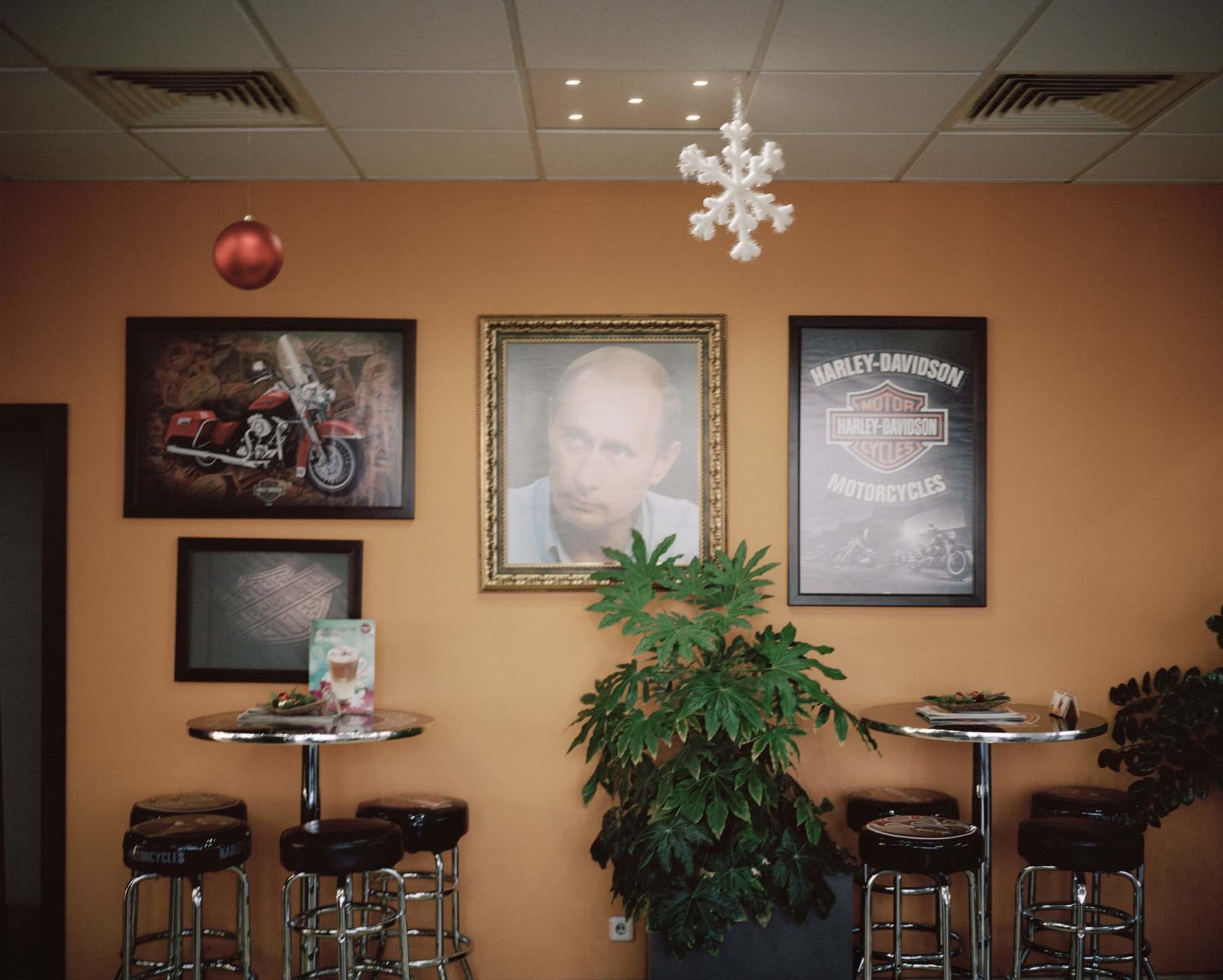
Bulgaria, Svilengrad. 2016. A petrol station with photos of Putin and Harley Davidson. A percentage of Bulgarian is not happy with the entrance of Bulgarian in the European Union and would prefer a closer alliance with Russia. In the last years several European Countries opened to a closer alliance with Russia.
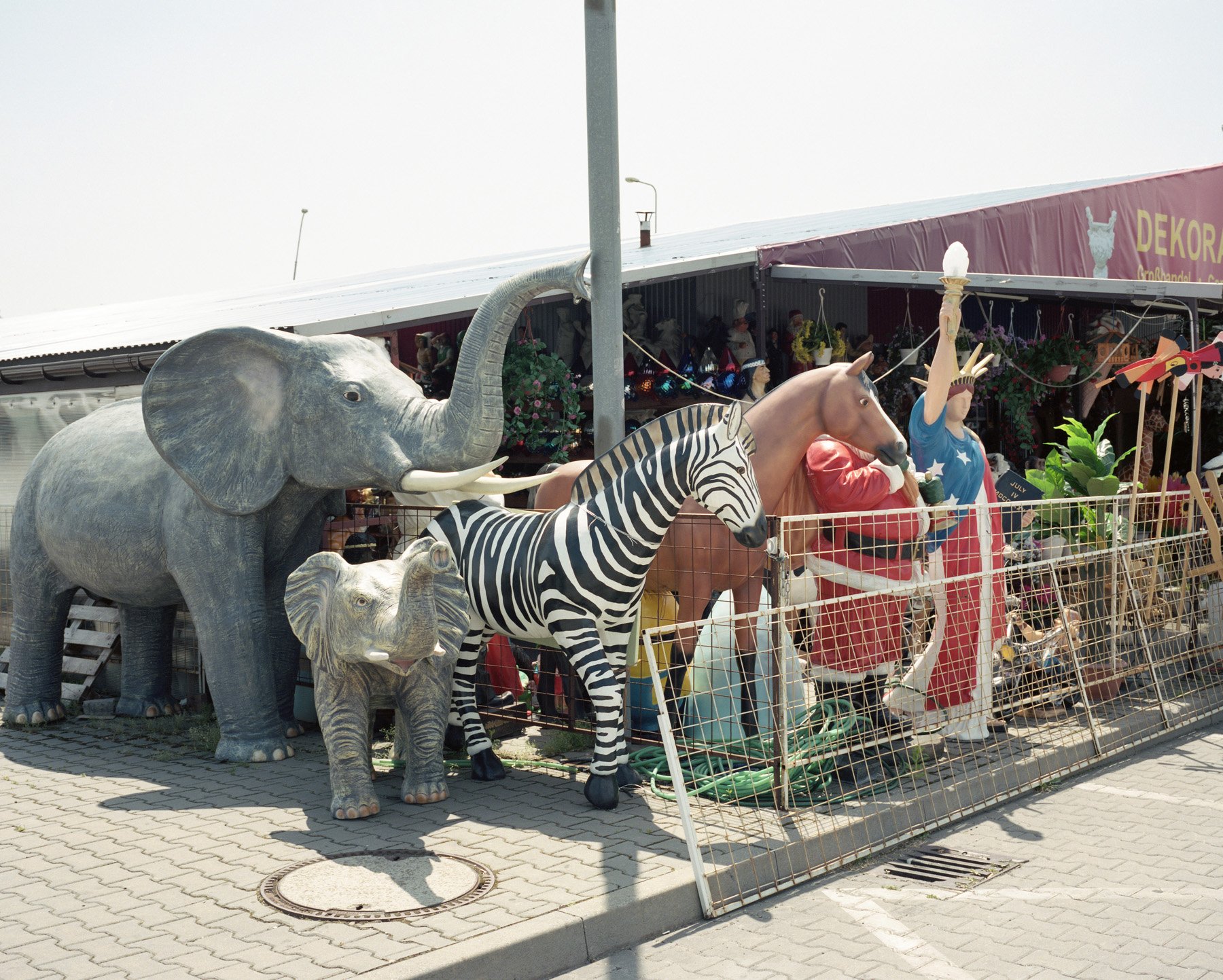
Czech Republic, Znojomo. 2019. The border between Czech Republic and Austria has been closed until 1989. Today, especially with the entrance of Checz Republic in the European Union, the border is open and people can freely circulate between the two countries; on the Checz side, few kilometres before Austria there is a large duty free shop that sell from alcohol to statues and include a Casino and several restaurants.
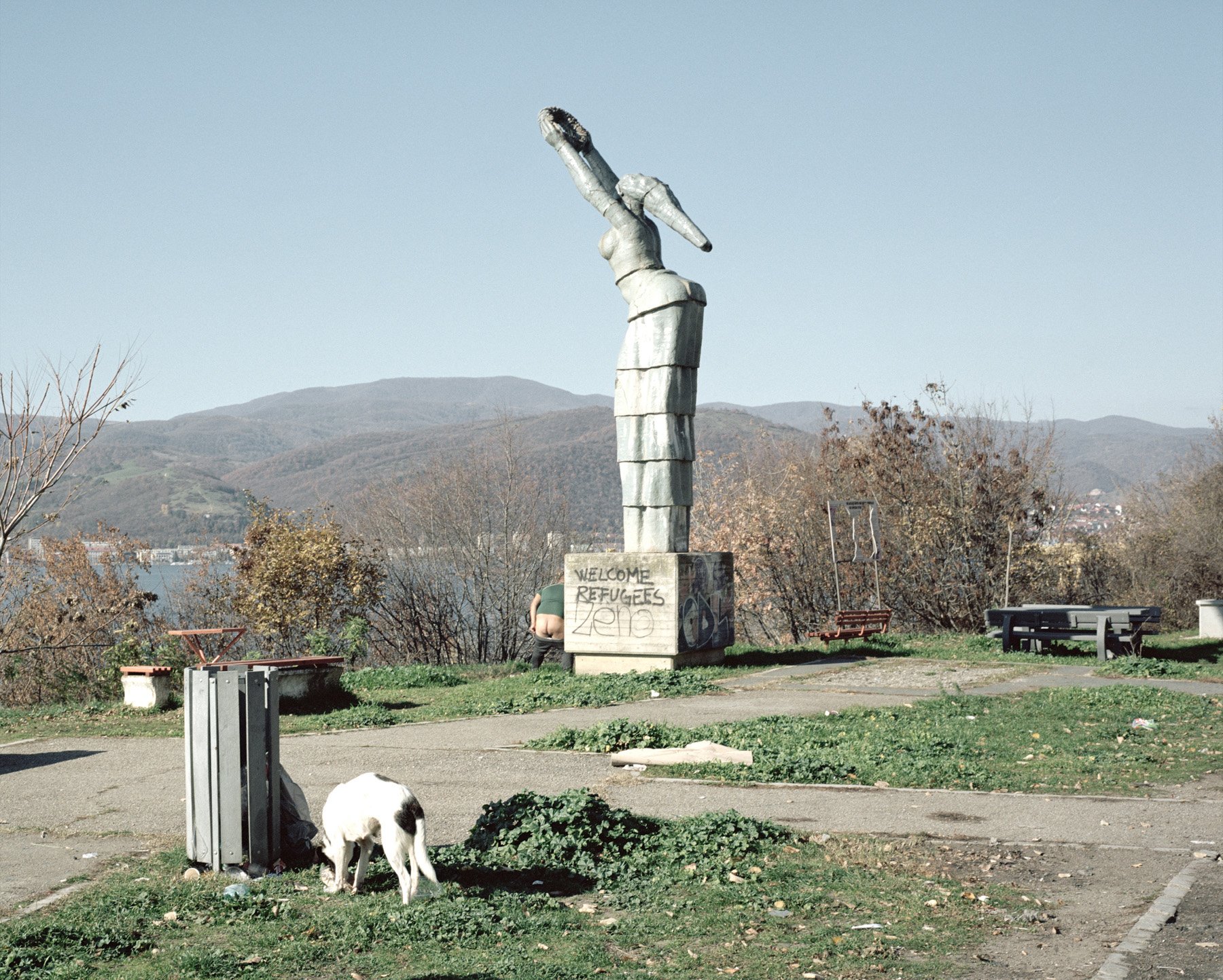
Romania, Orsova. 2016. A communist style monument with a wrote welcoming refugees.
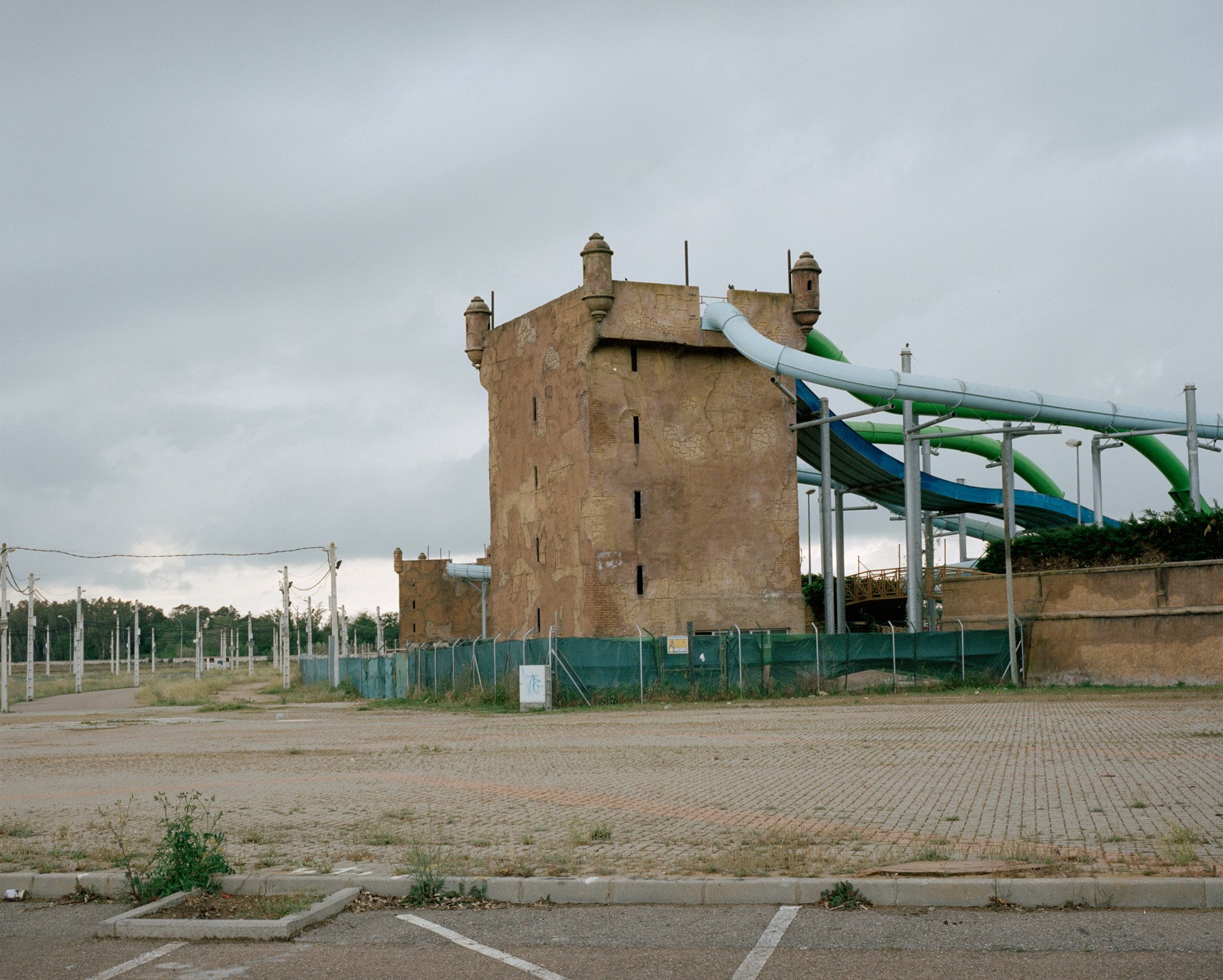
Spain, Badajoz. 2015. A water park built with the shape of a middle age castle.
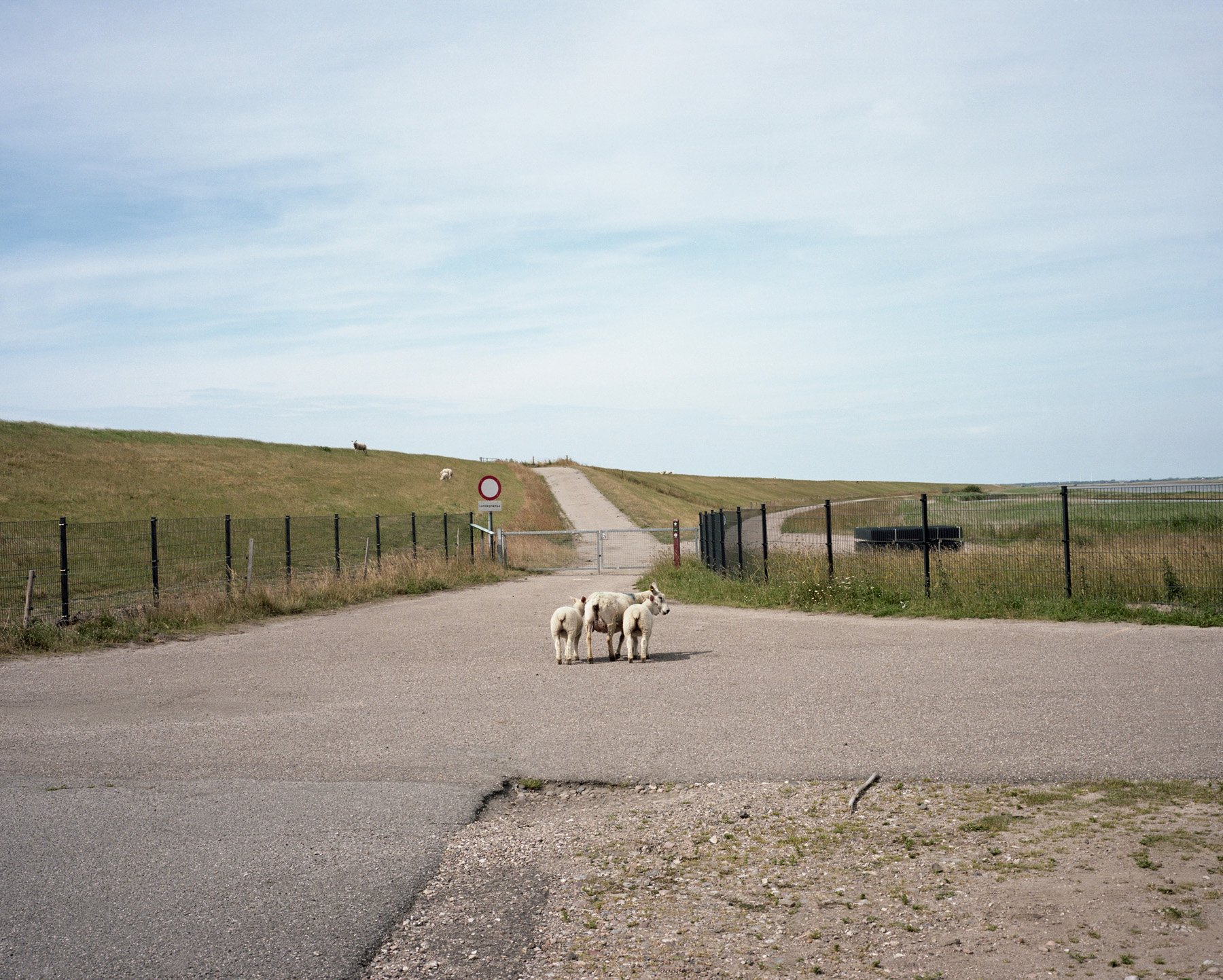
Germany, Rickelbuller Koog. 2019. A view on the border between Germany and Denmark. Dermark built a 70 km fence along its border with Germany to protect its pigs from disease-carrying wild boar coming from Germany. Export in Denmark’s pork industry totalled 4 billion Euros in 2016, the Denmark autho- rities decide to build the fence to prevent the spreading of the African swine fever.
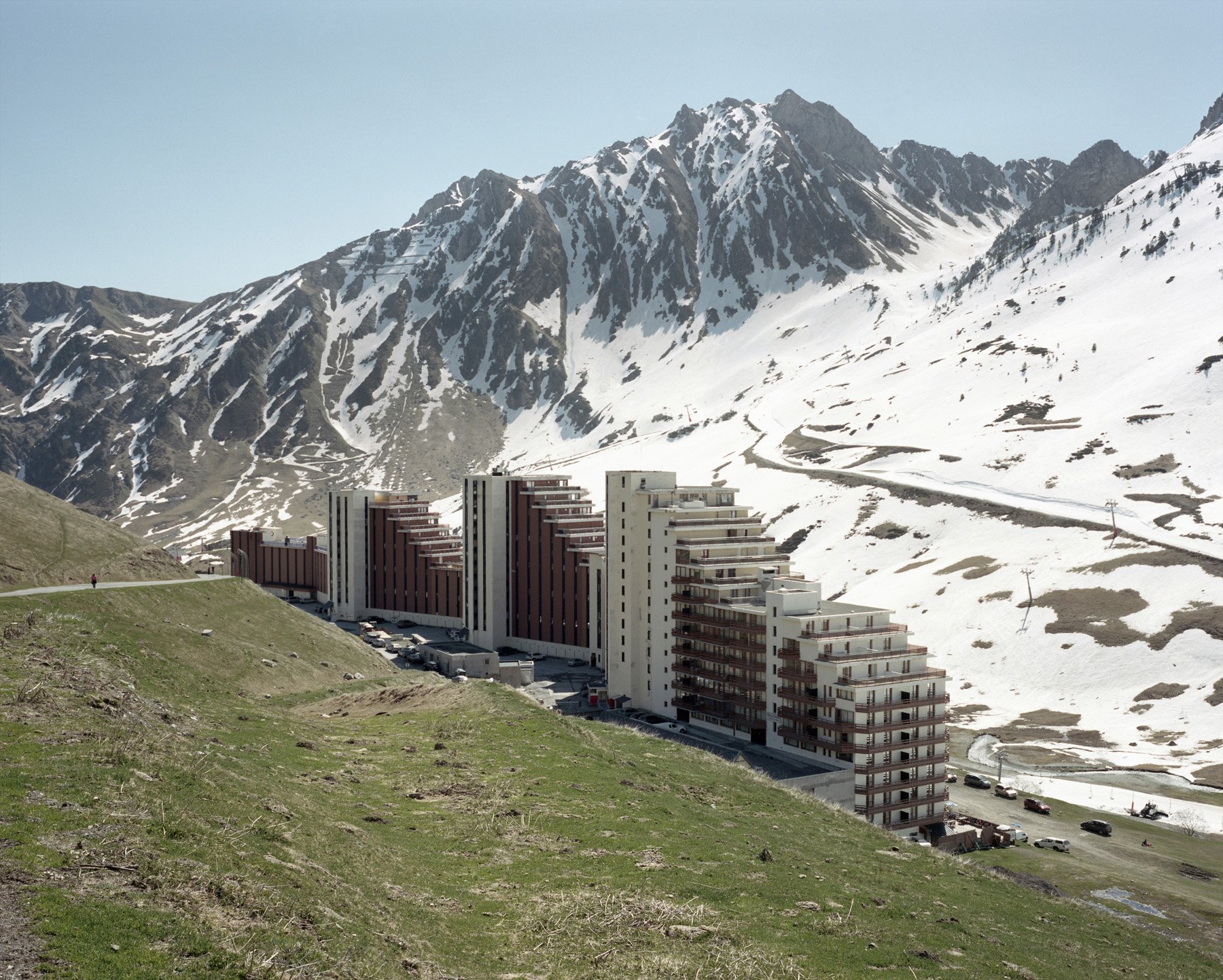
France, La Mongie. 2017. A view of a building belonging to a ski resort. According to the European Environment Agency, Europe’s mountain regions may suffer some of the most severe impacts of climate change. Increasing temperatures can change snow-cover patterns and lead to water shortages and other problems such as reduced ski tourism.
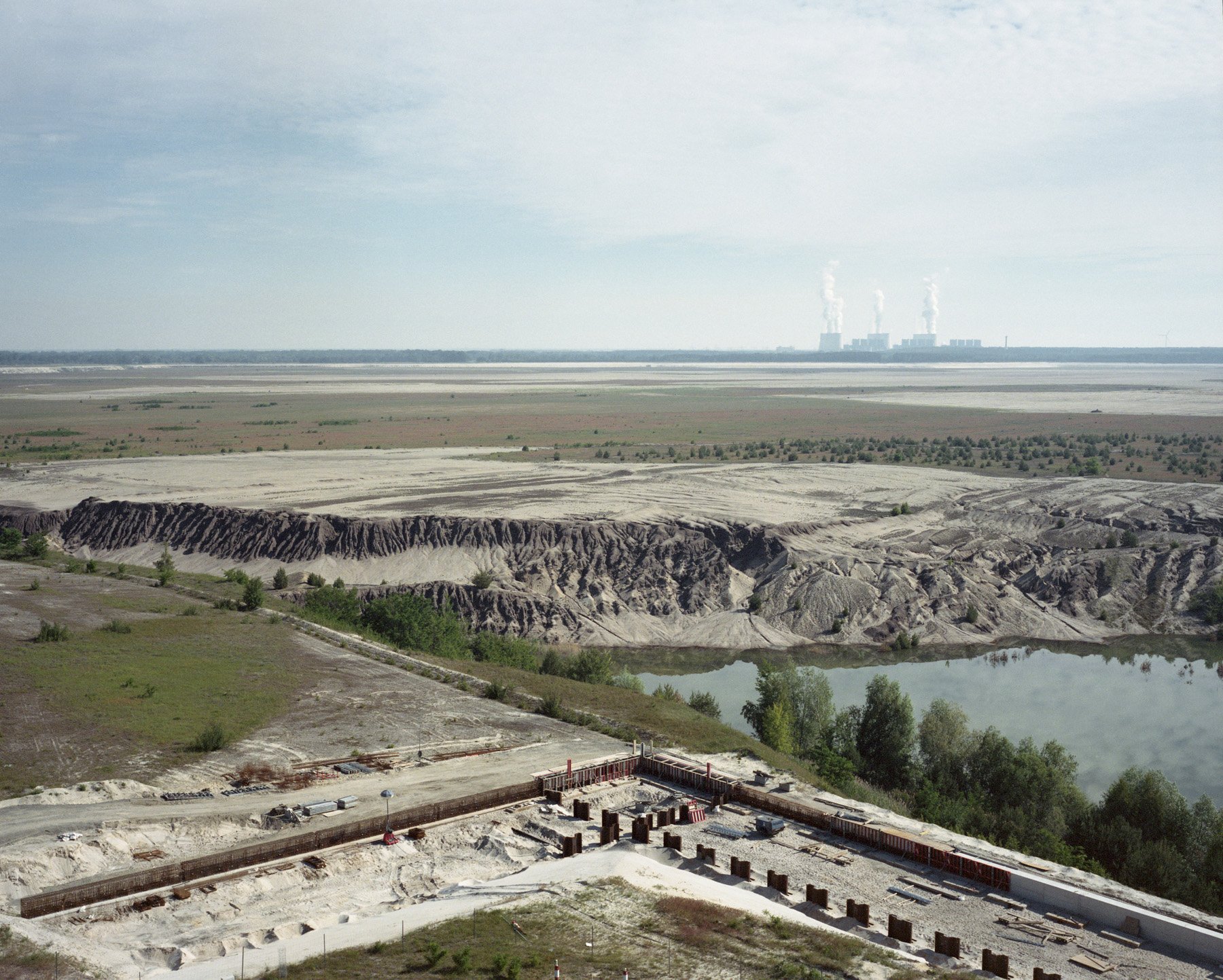
Germany, Boxberg. 2019. A view of Welzow mines and power station, a lignite-fire power station. Before the German unification, it was part of the so called “Black Triangle”, a border region shared by Germany, Poland and the Czech Republic, long characterized by extremely high levels of pollution. Despite Germany is planning to be a removable energy country,lignite and coal power station are still active.
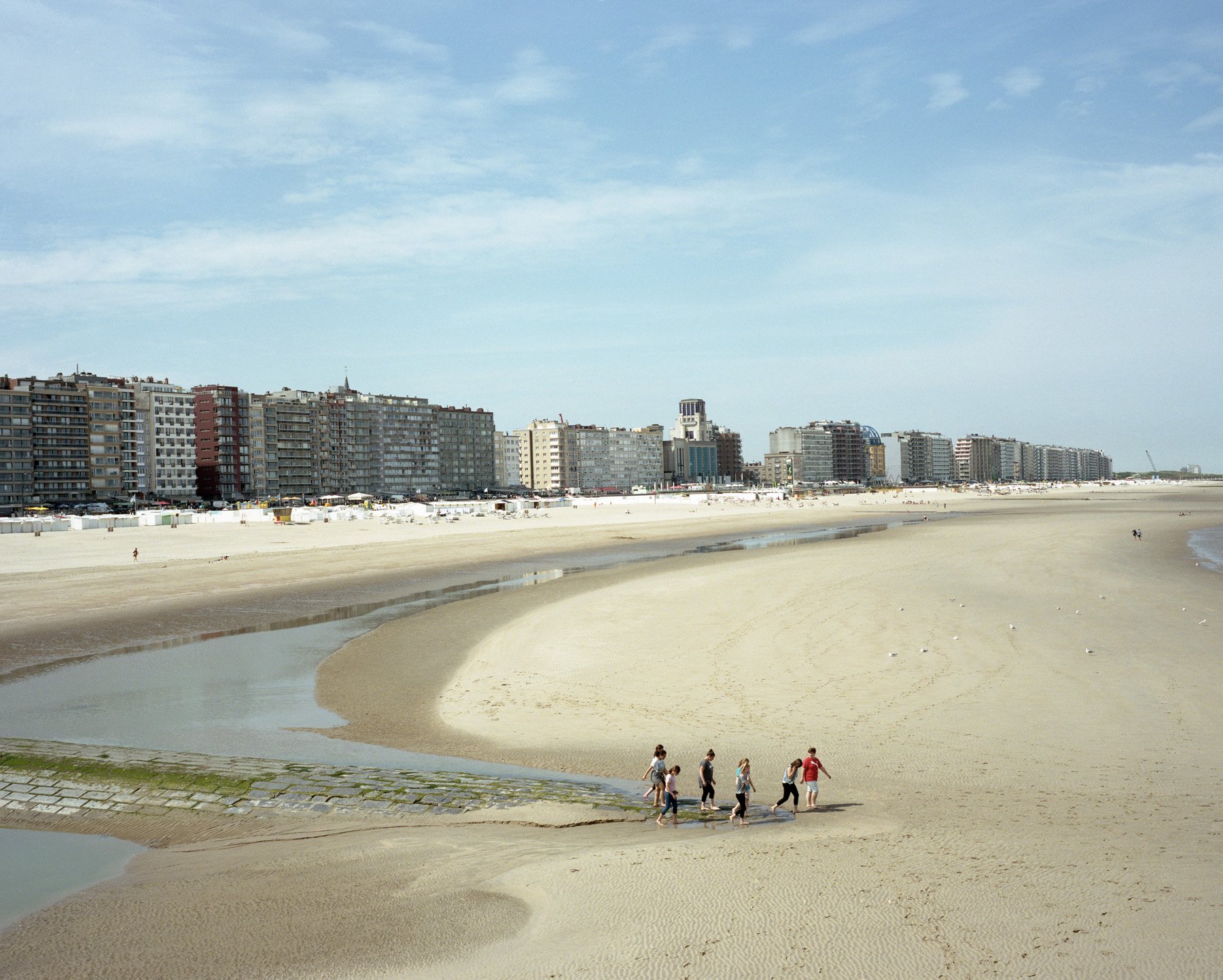
Belgium, Knokke-Heist. 2019. A view of the seaside of the small city at the border with Holland. Knokke-Heist is Belgium’s best-known and most affluent seaside resort, the territory witnessed an overbuilding, today the city has also a Casino among others tourist facilities.
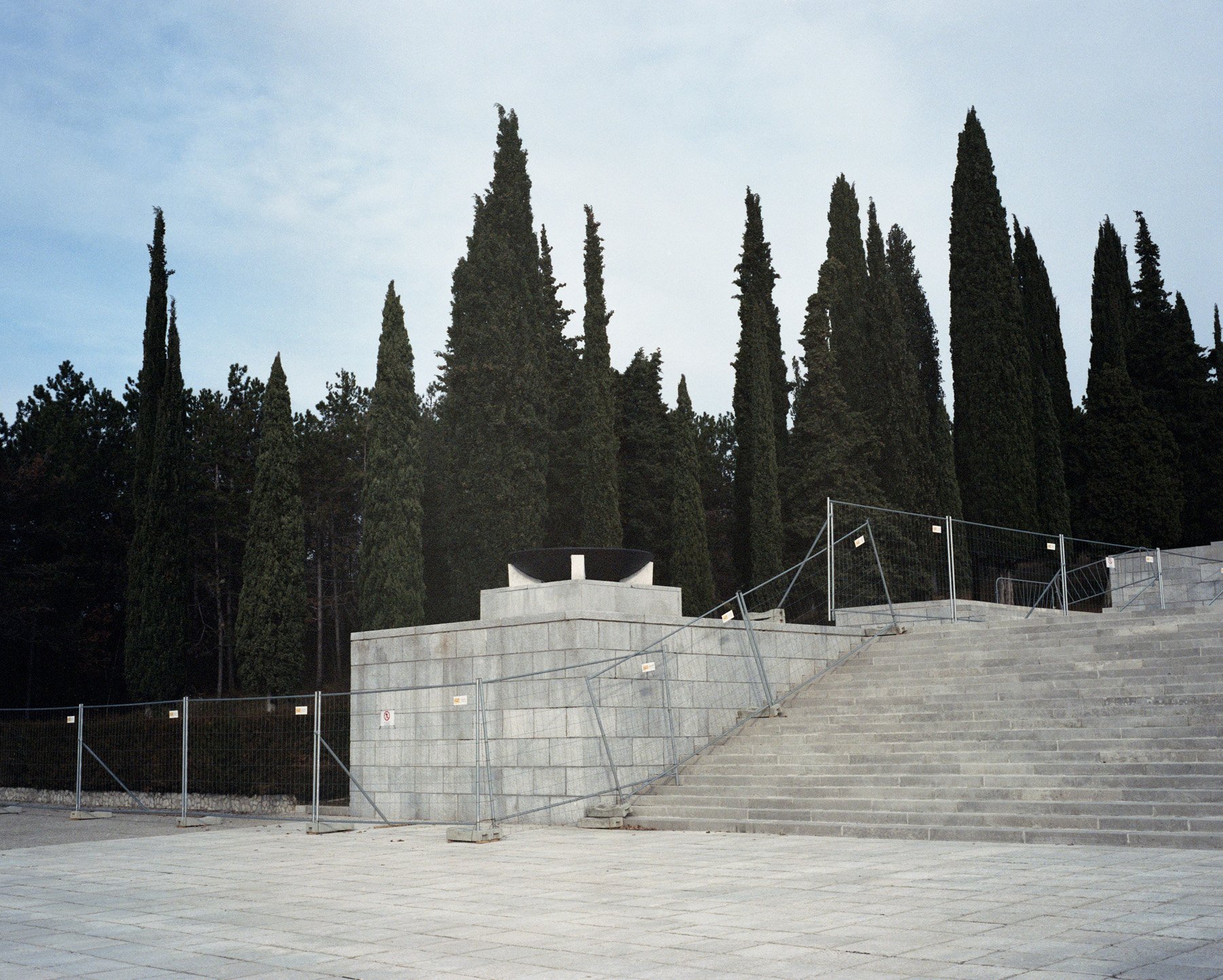
Italy, Redipuglia. 2019. A view of Redipuglia War Memorial, the largest war memorial in the World housing the remains of 100000 Italian soldiers died during the first World War.
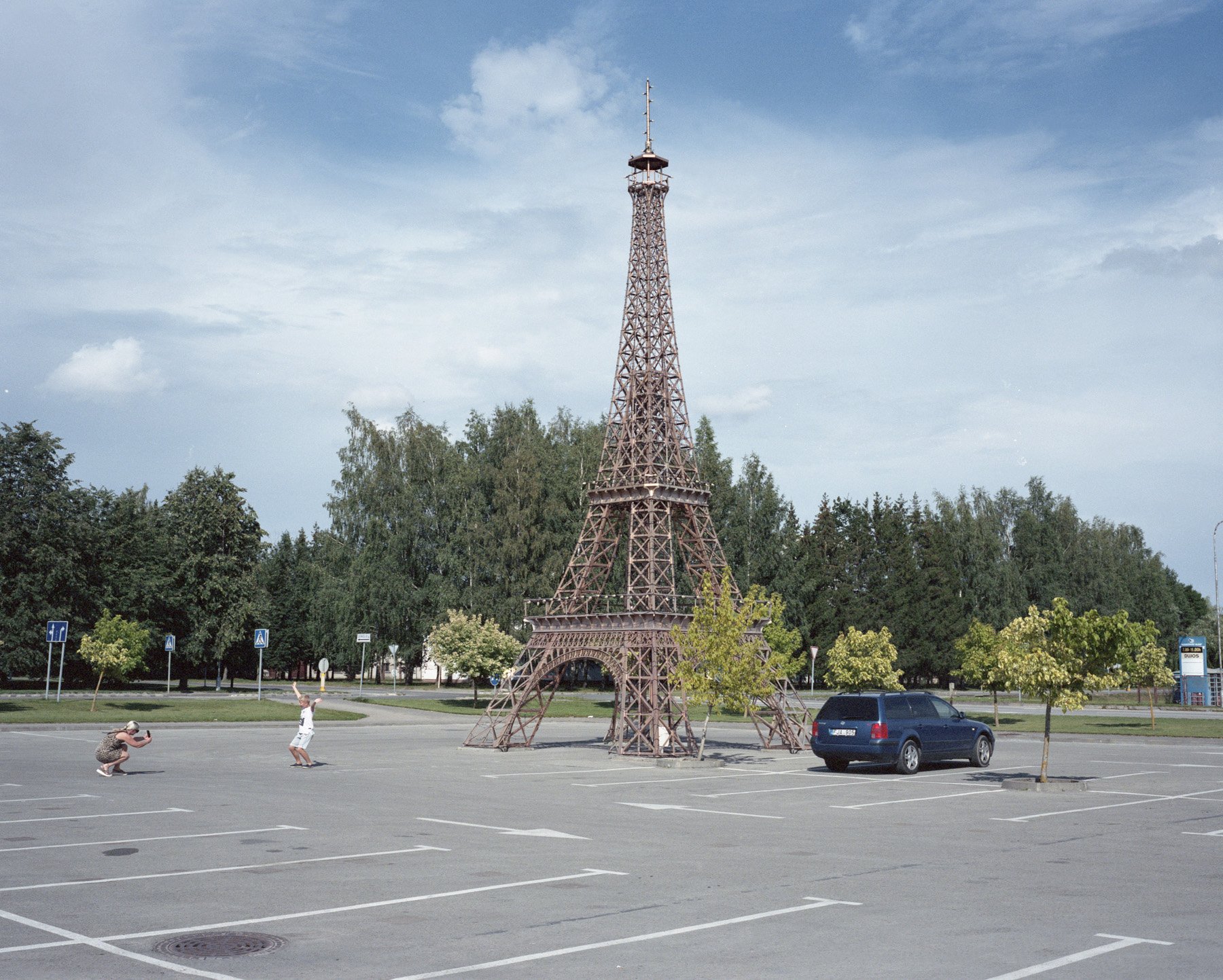
Lithuania, Mazeikiai., 2020. A reproduction of an Eiffel tower in fron of a shopping center named “Eiffel”.
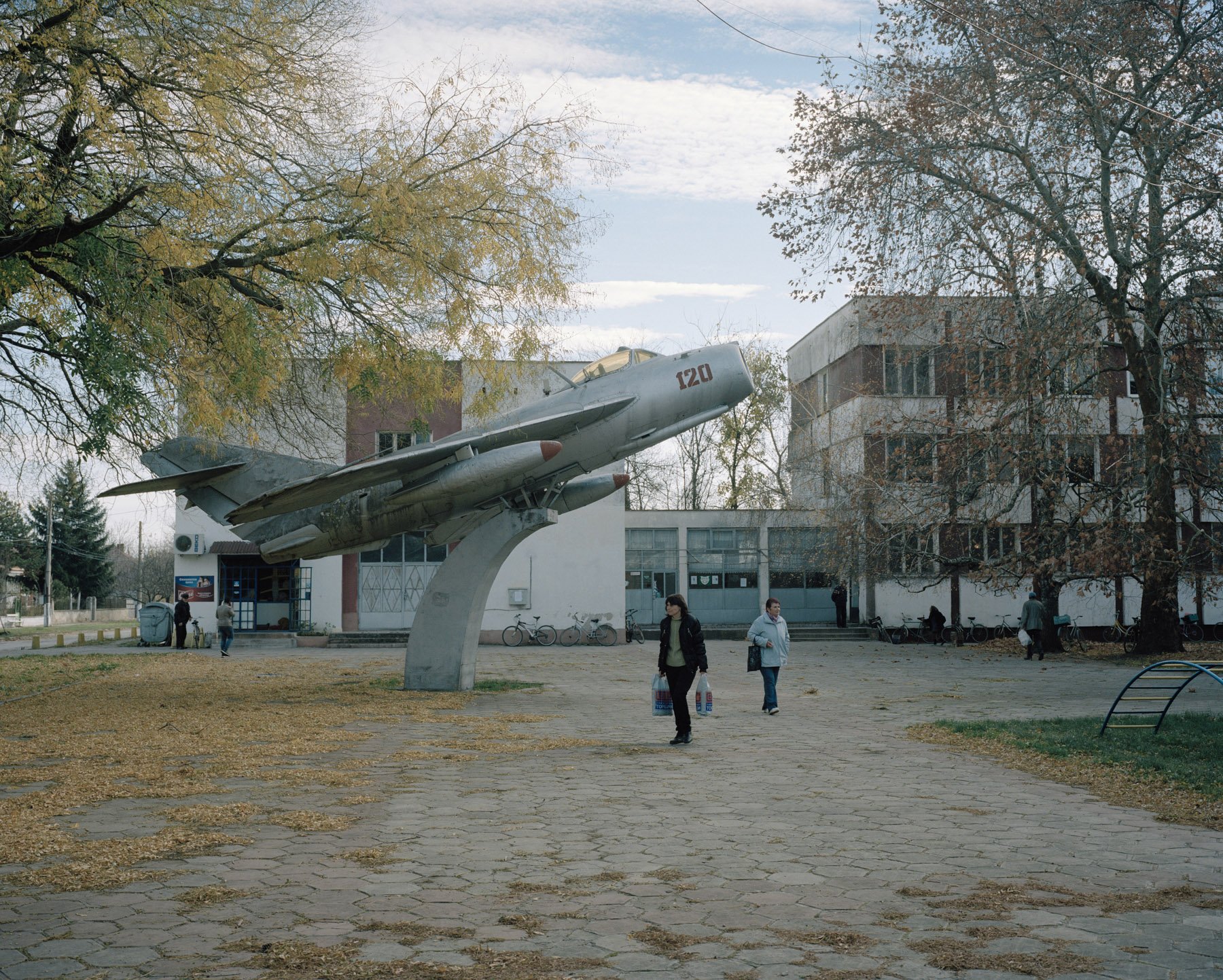
Bulgaria, Bardaski Geran. 2016. A MIG plane, Russian Cold War jet fighter aircraft in front of the Town Hall. In Bulgaria are still present several war-related monuments. These Russian Military monuments, standing in the places where they are displayed, are slowly deteriorated by the weather recalling an era that already ended. Most probably if tomorrow they would desassear the people wouldn’t notice the difference.
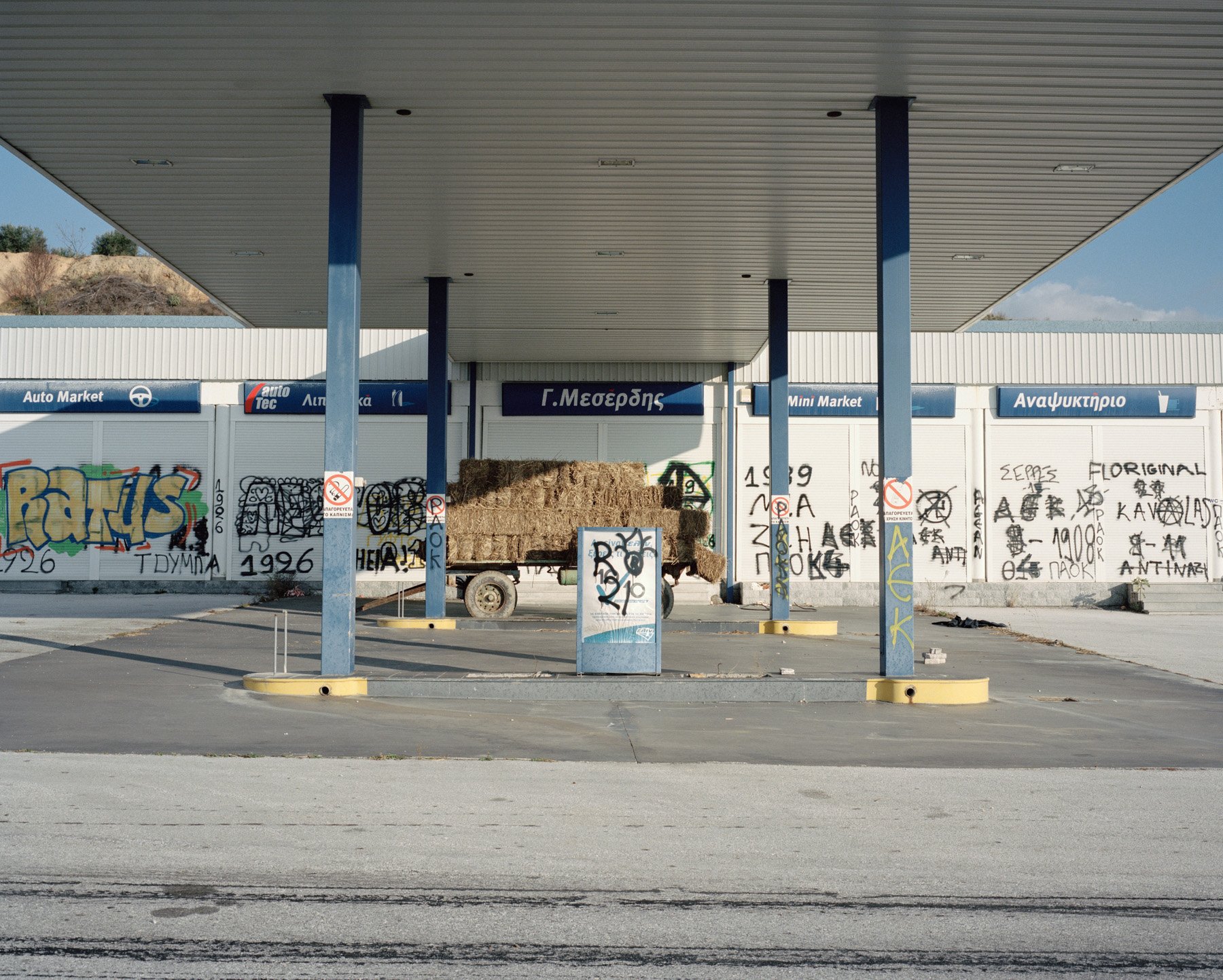
Greece, Serrai. 2016. Abandoned petrol station. The Greek Macedonia is one of the poorest region of the country.
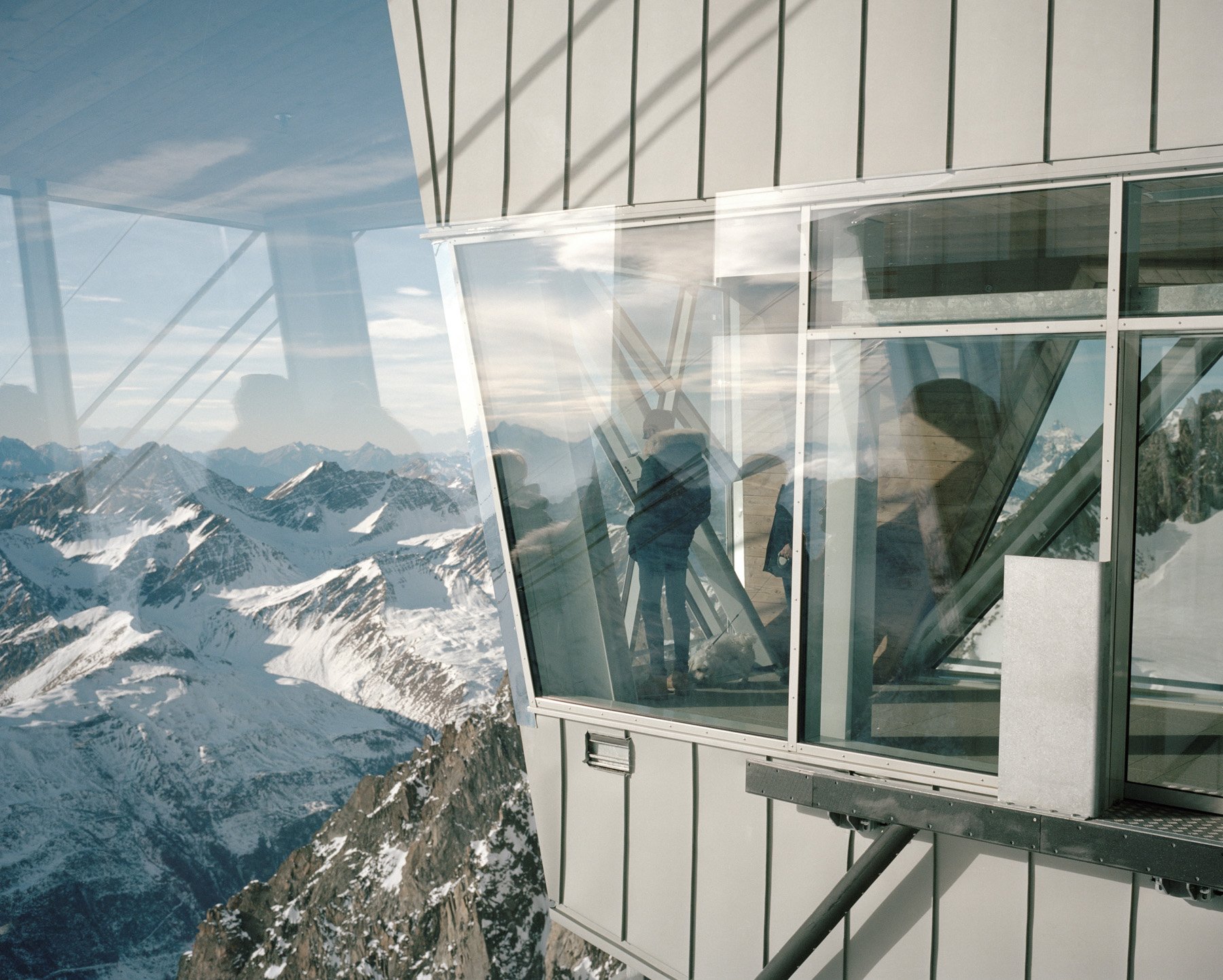
Italy, Courmayeur. 2016. A view of the last stop of the Monte Bianco’s cableway, the highest of Europe. In the lastyears, the border between France and Italy moved due to glaciers melting and in 2019 Summer, for the first time, on the Tori-no Hut, at 3,329 m on the Mont Blanc, the temperature was around 10 grades Celsius.
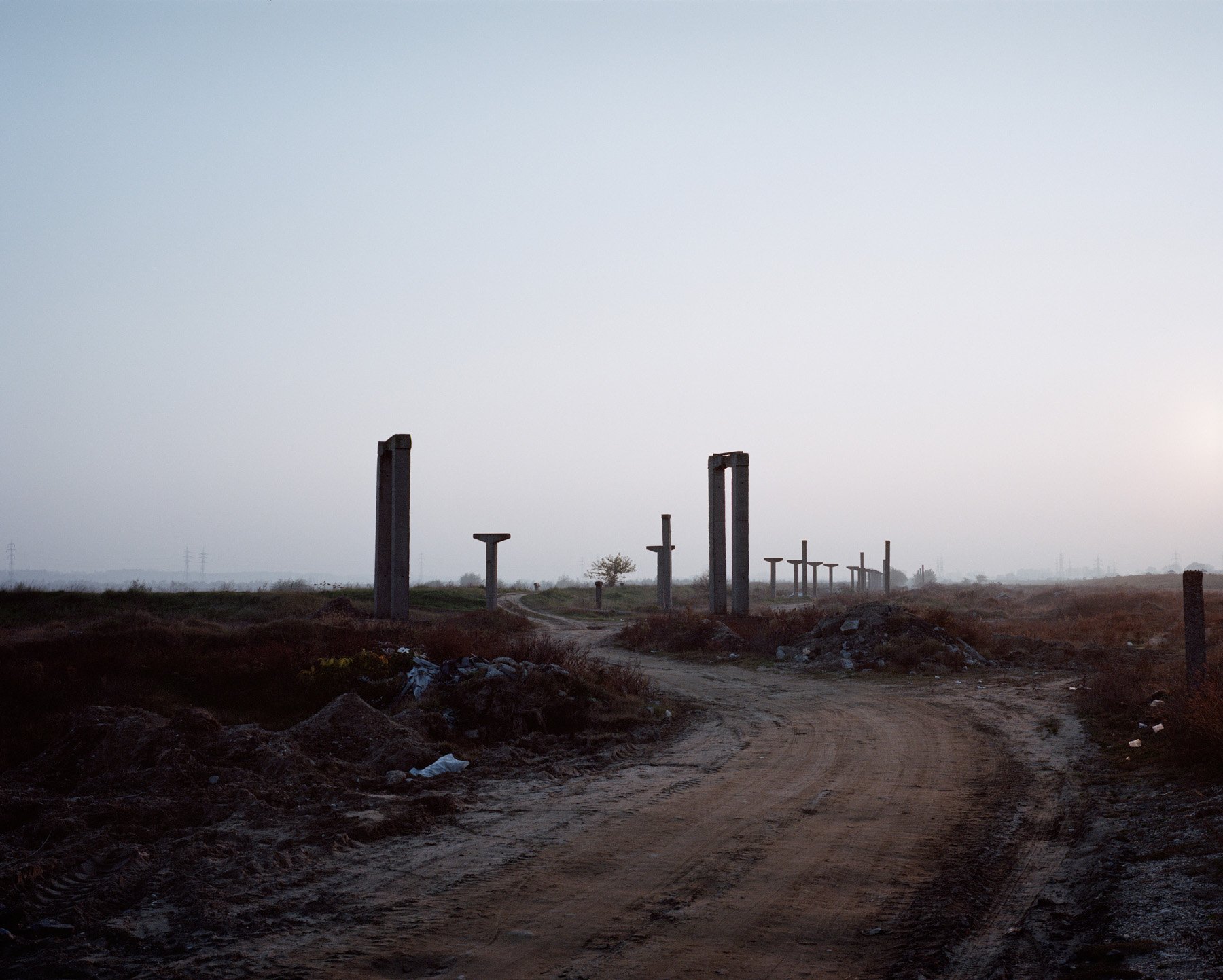
Giorgiu, Romania, 2016. Ruins of industrial facilities.

Romania, Calarasi. 2016. A farmer with his sheep.
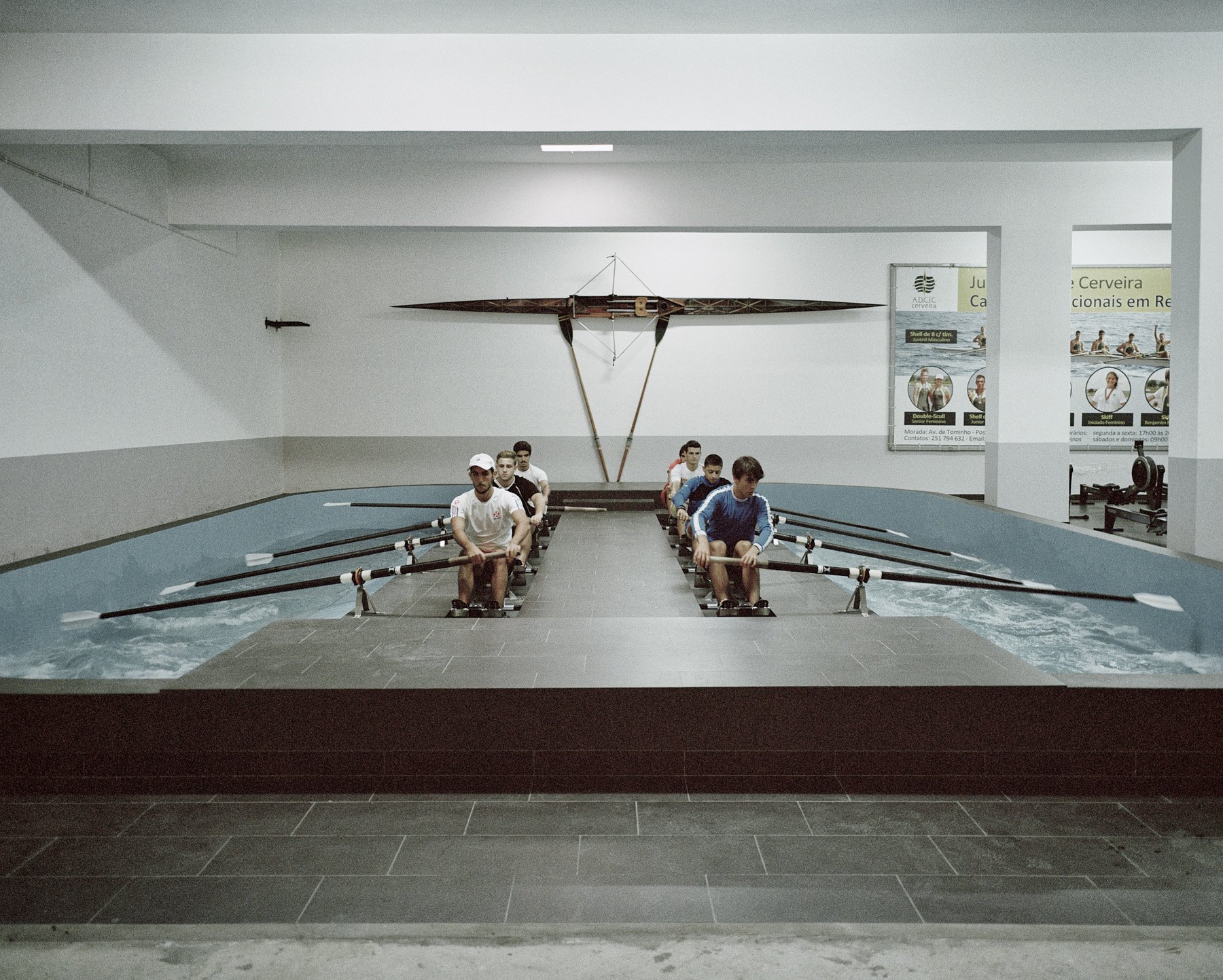
Vila Nova de Carbeira, Portugal, 2014. A team of oar train in an indoor pool loacted in front of the Minho River.
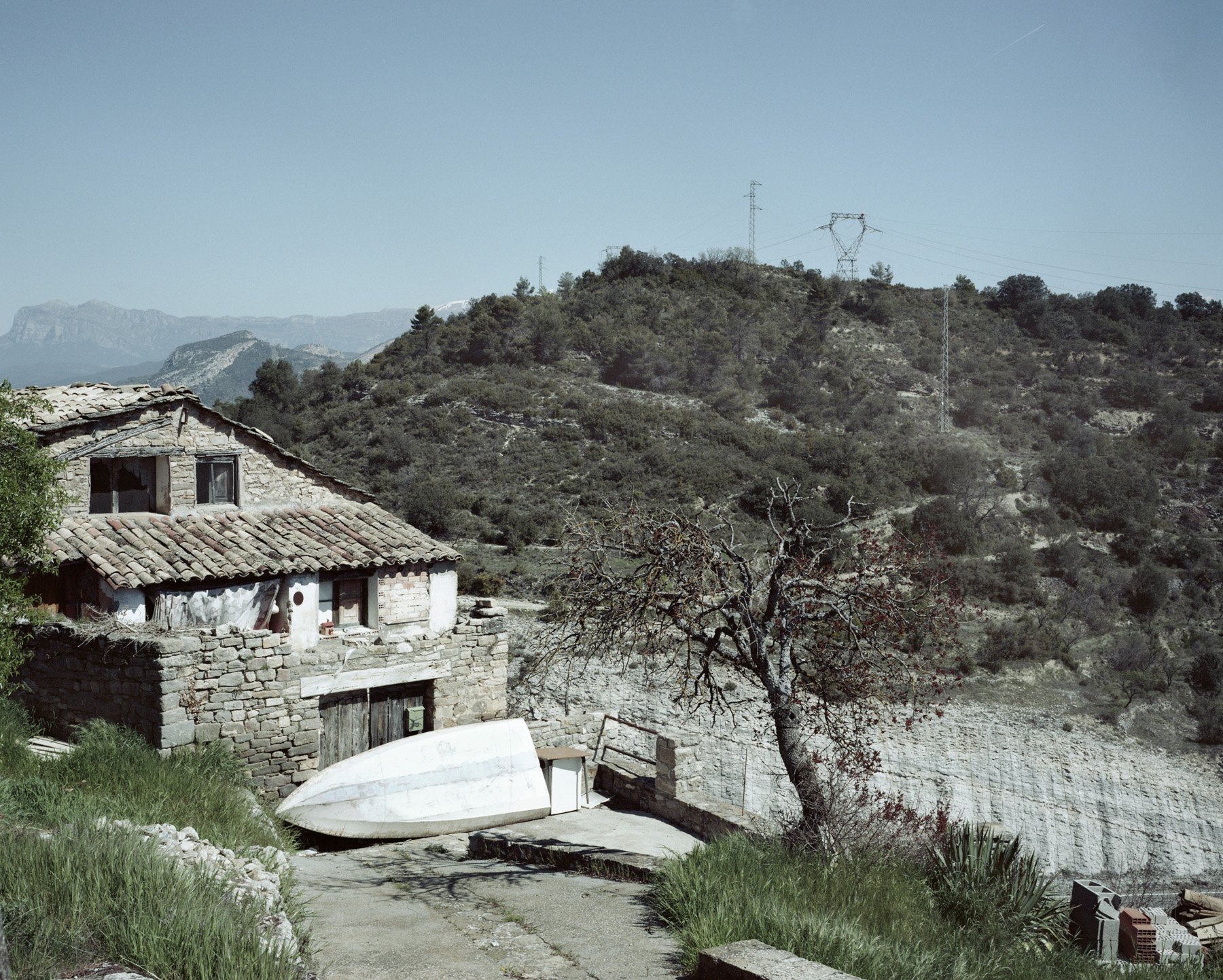
Spain, Yesa, 2017. A landscape near Yesa dam. According to the plan the Yesa Dam should be implemented. The local inhabitant are protesting because concerned on the risk of floods.
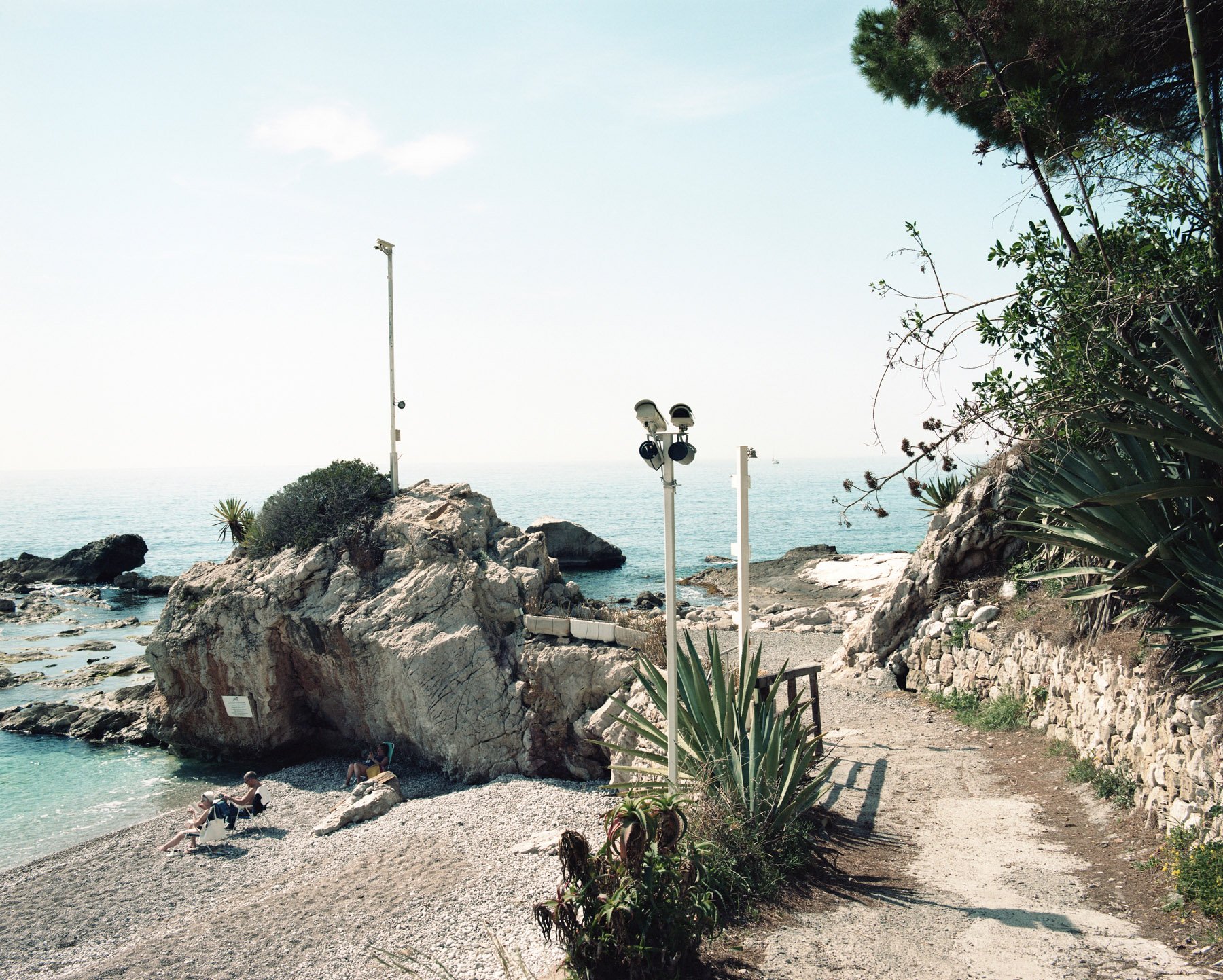
Italy, Ponte San Ludovico. 2017. A local beach close to the border with france surveilled by camera to prevent migrant to cross the Italian/French border.
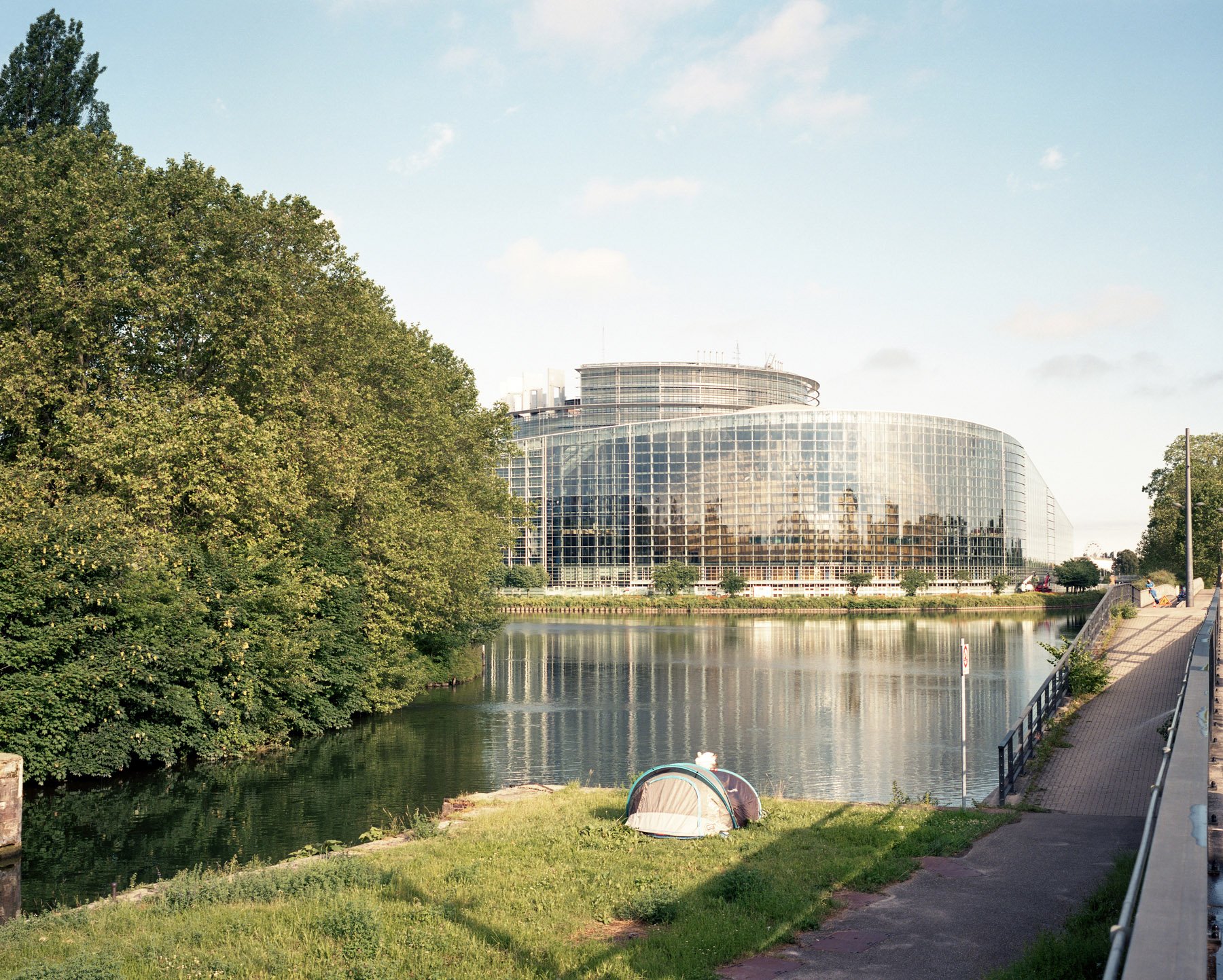
France, Strasbourg. 2019. A tent of a protester is mounted on the other side of the river of the European Parliament.
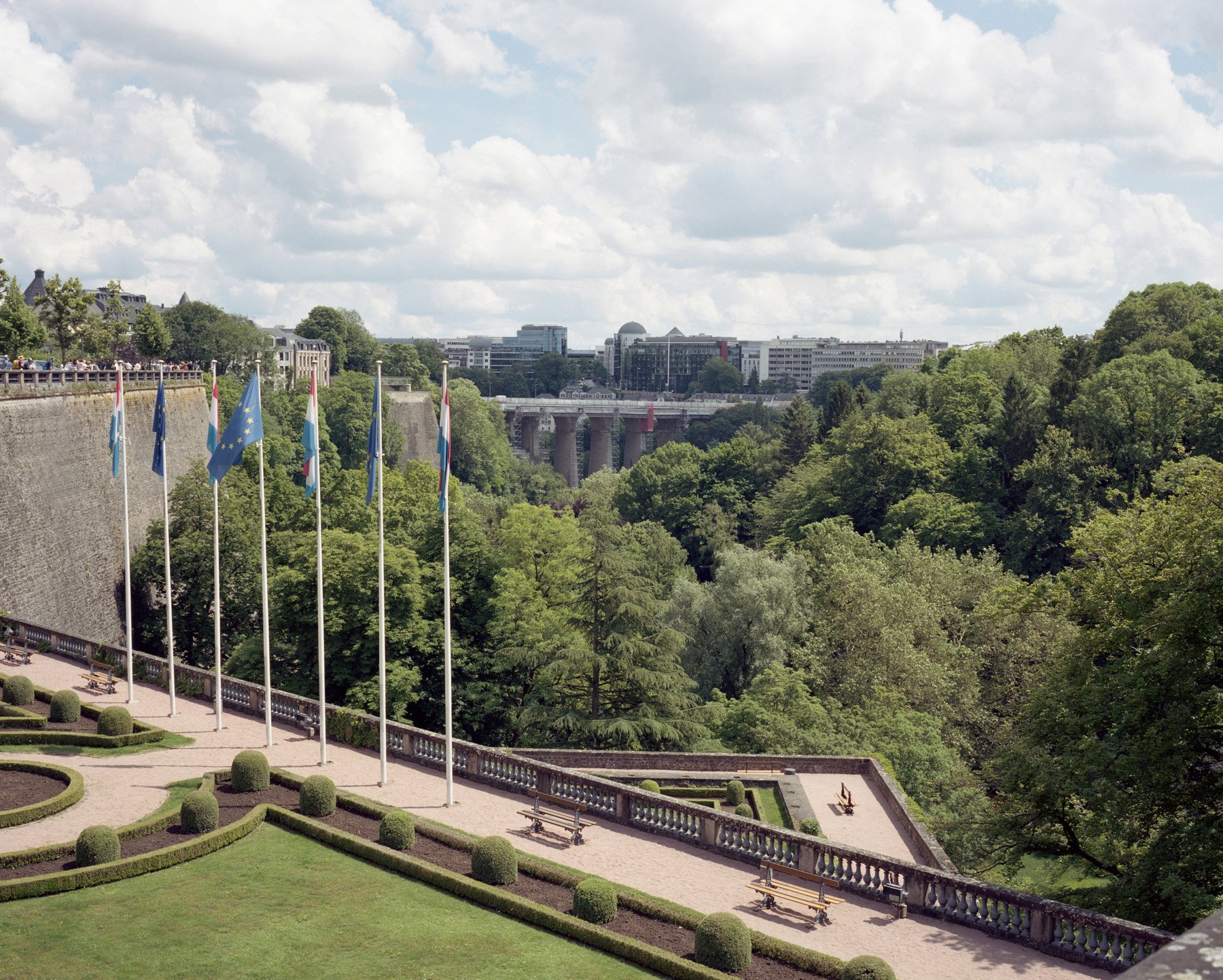
Luxembourg, Luxembourg, 2019. A view of the city center. In 2011, according to IMF, Luxembourg was the second richest country in the world. Its economy is mainly based in banking and finance. Luxembourg is the world’s second largest investment fund centre. In 2009, the country entered in G20 grey list because its banking secrecy laws, as well as its reputation as a tax haven.
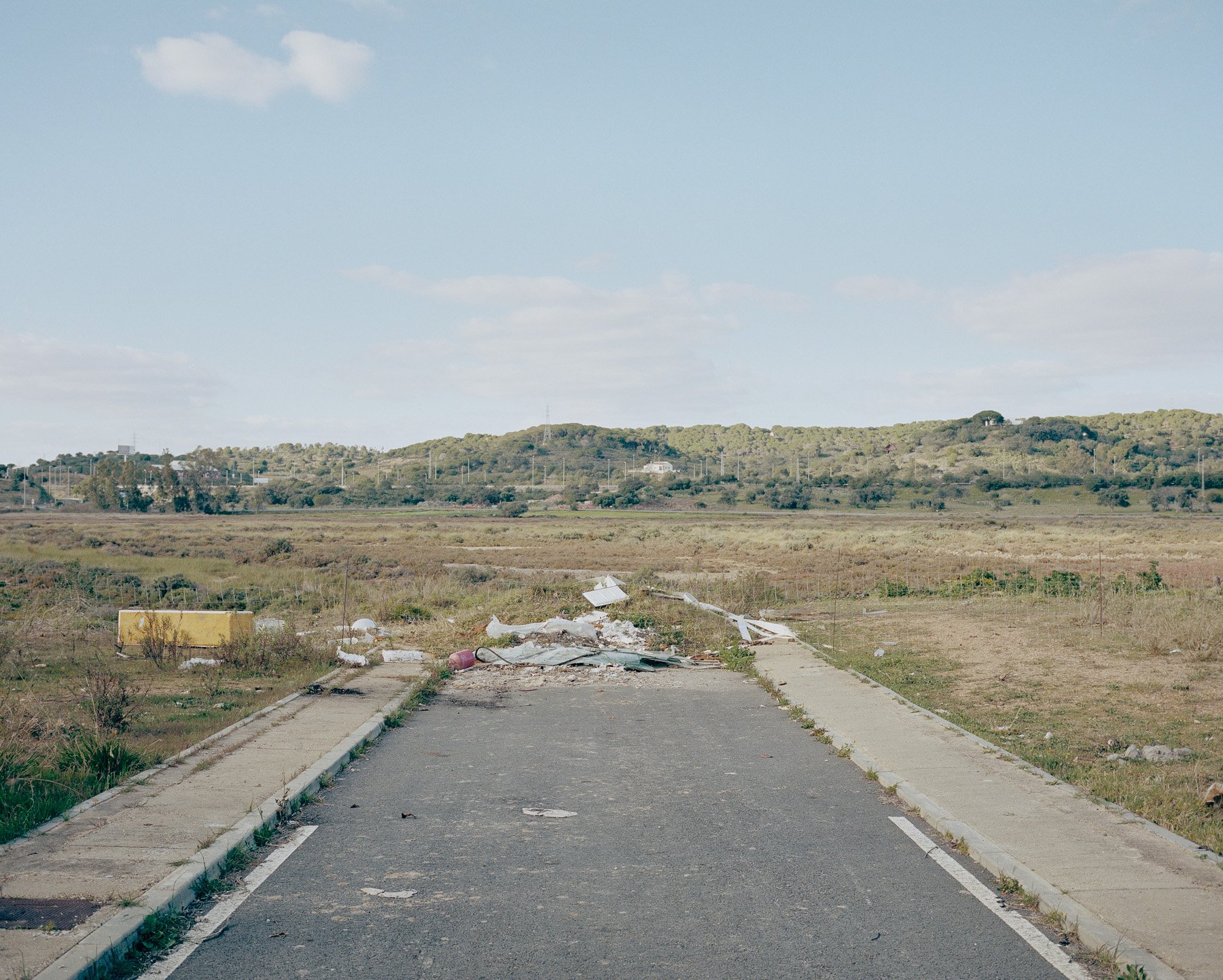
Ayamonte, Spain, 2015. Unfinished road near a residencial complex
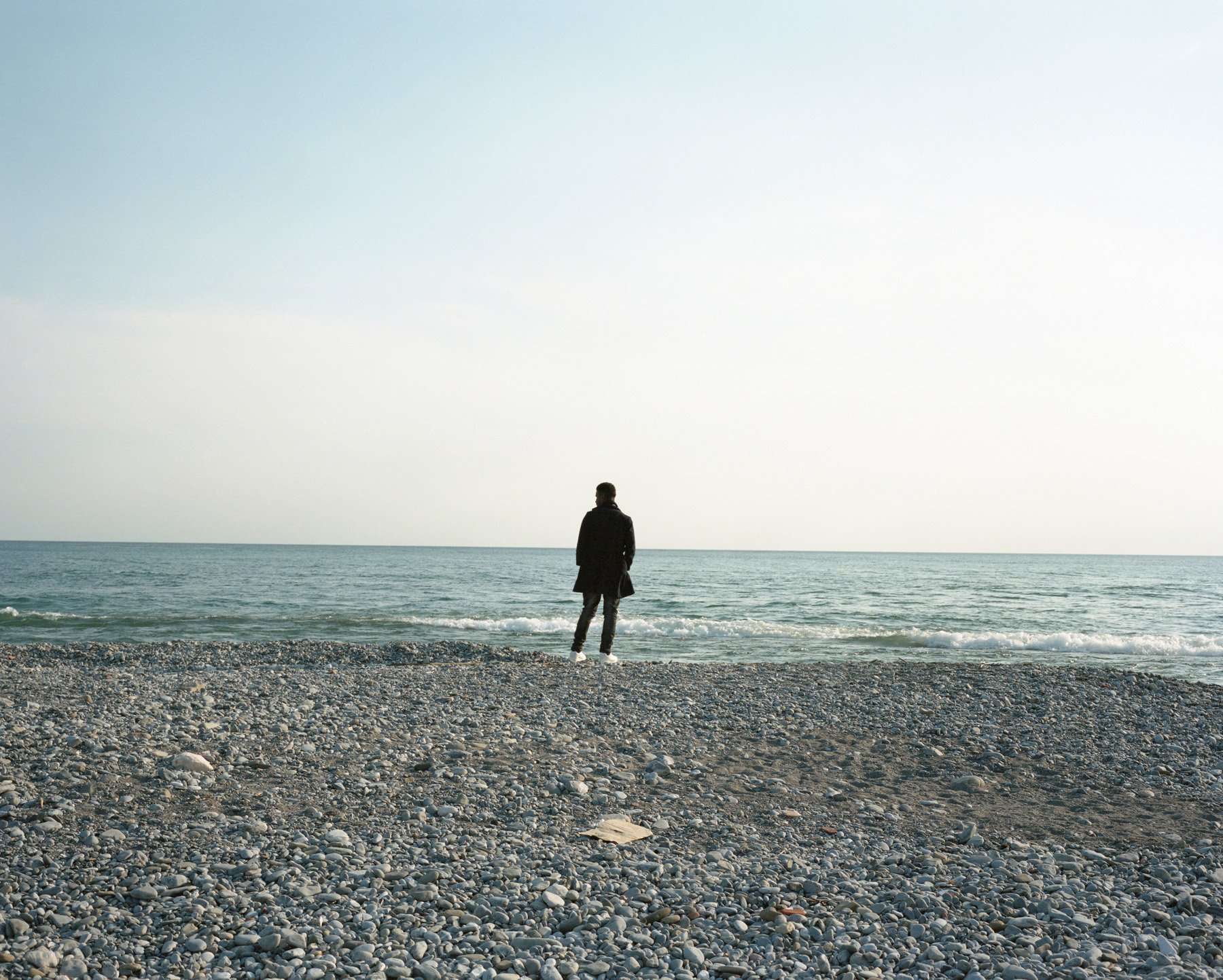
Italy, Ventimiglia. 2017. A migrant stands in fron of the Mediterranean Sea close to the Border between Italy and France. France intensify the controls on the border with Italy suspending the Schengen Treaty. The migrants that try to cross illegally the border between Italy and France have to hike several hills and ford at least one river; the trails is quite difficult and, according to the NGO Anafé, in 2018 at least 30 migrants died trying to cross the border.


































Domestic borders of Europe
Since the creation of the European Union (EU) one of the goal has been the unification of the different countries belonging to the EU and the abolishment of the frontiers between these countries. The Schengen treaty stipulated in 1985 have had the aims to gradually create an EU without borders, later in 1990 with the Schengen Agreement finally eliminate the borders between European countries allowing the free movement of people across the several European countries and the abolition of internal border controls.
In the last decade separatist movements grow up all across Europe, the economical differences between the European countries increased, the foreign politics aren’t common for all the countries, in a period in witch Europe should consolidate his union new obstacles and challenges appear.
The domestic borders of Europe, now – after the Schengen Treaty and with the European unification — are gone. Just mountains, rivers and imaginary historical lines, are what have left: a liquid frontier between apparently distinct countries. The rivers, the mountains, the history trapped in the places define the communities, the interaction and the contacts between the people of two neighboring countries, where the territory and the communities shape reciprocally around a specific space – physical, human and cultural – that get dissolved in the same rivers, mountain places that divide them. Empty of its political value, from a strange limbo made of controls and checkpoints the domestic borders become just aline on a map. The emptiness of the frontier, that have should fill of new life and new dynamics after the unification, get reflected in the territory, and while the world around is changing, on the border the space is assuming a proper physiognomy.
“Domestic Borders” becomes a route where each photos is a stop on the way, not searching for answer but interrogating the social reality, the relations between habitants and the territory and the meaning of Europe today. “Domestic Borders” ends up being an unusual and unexpected trip, a dystopian portrait of the relationships between and across the border, showing the challenges of living in an unique space.

